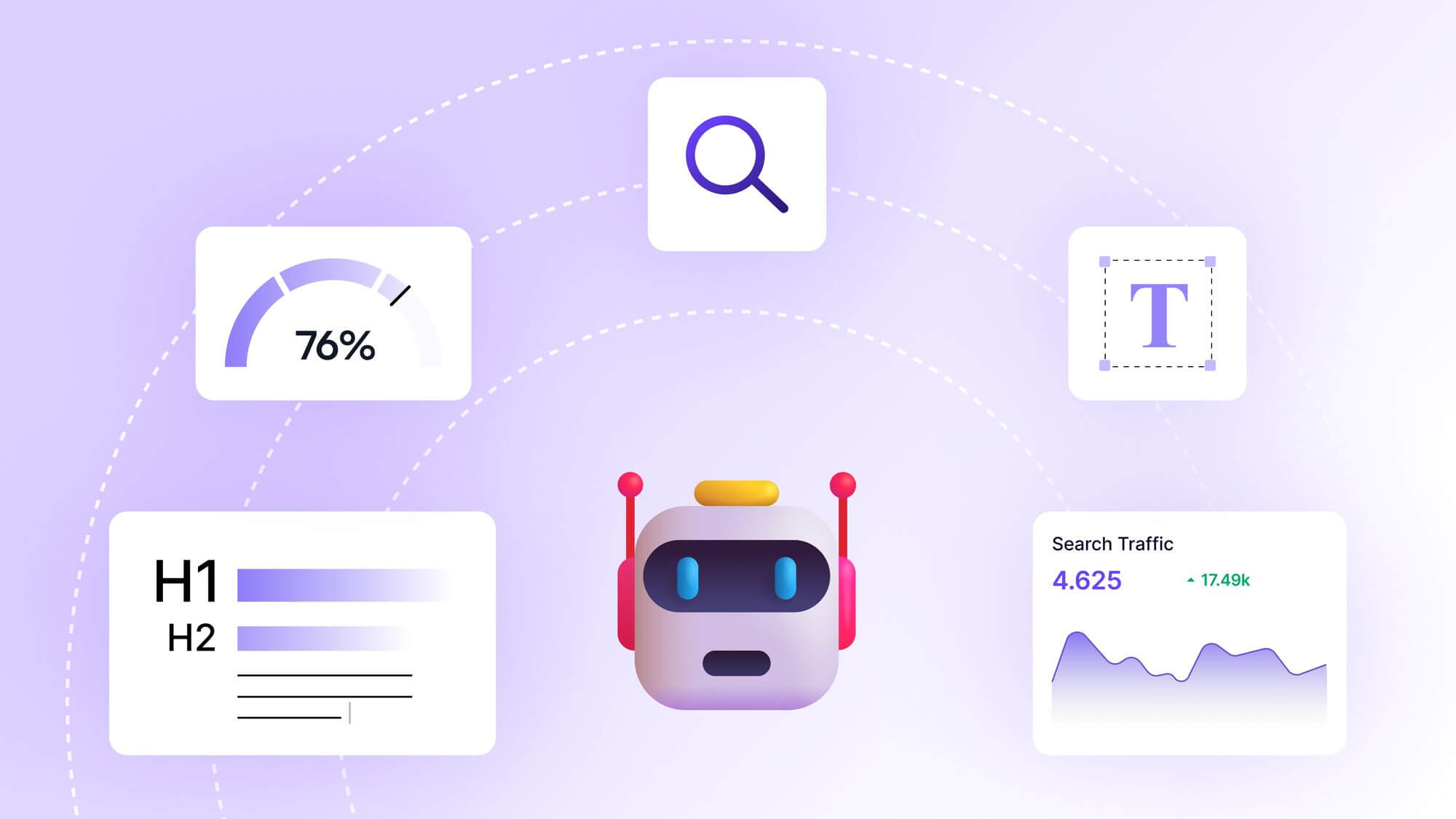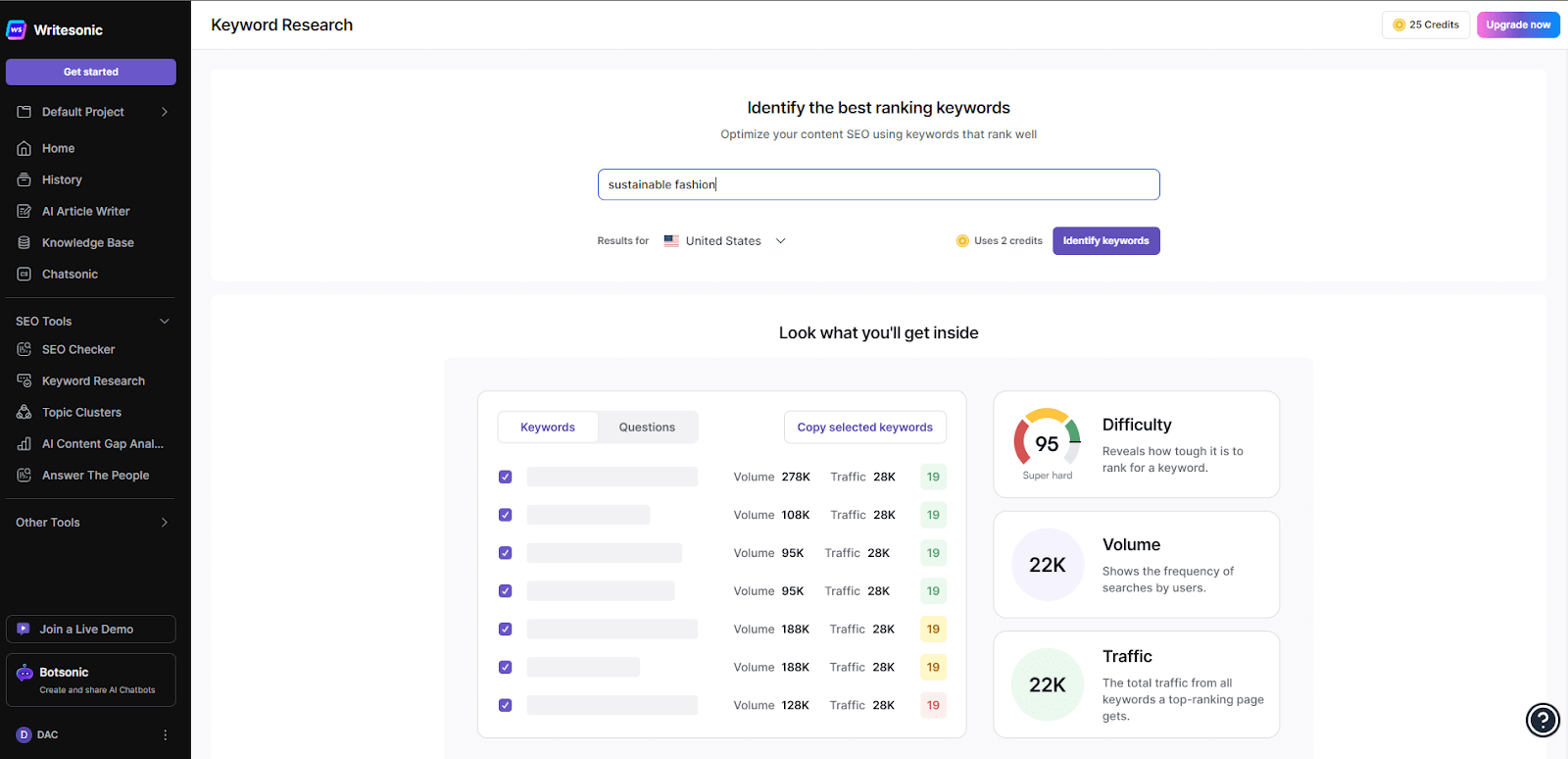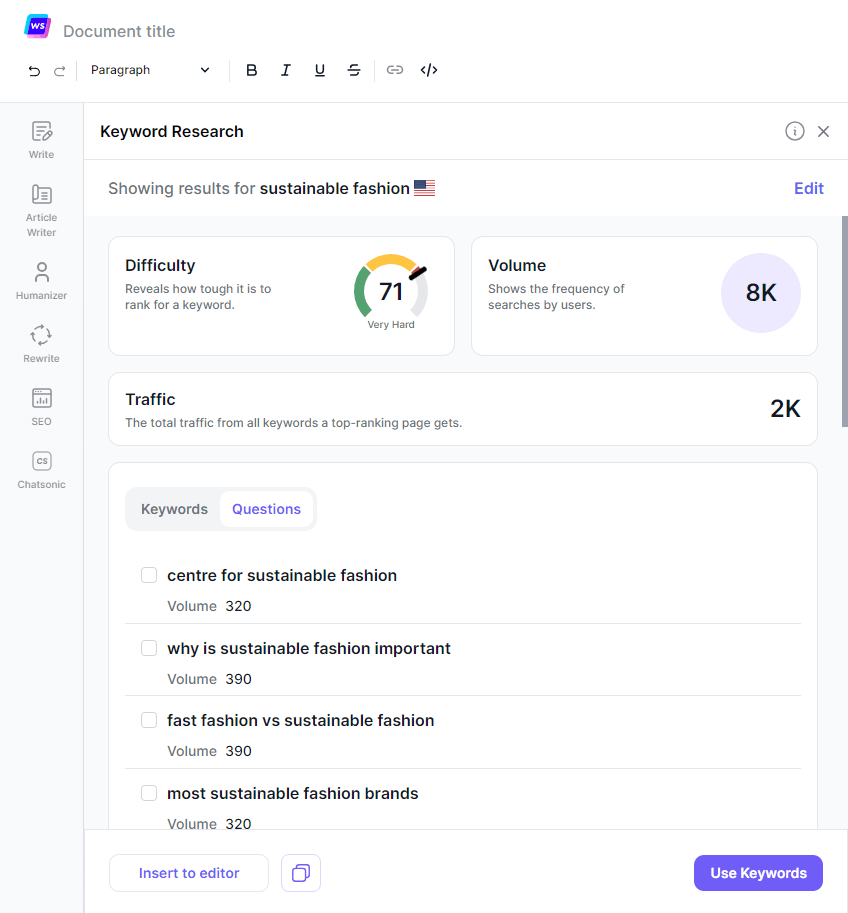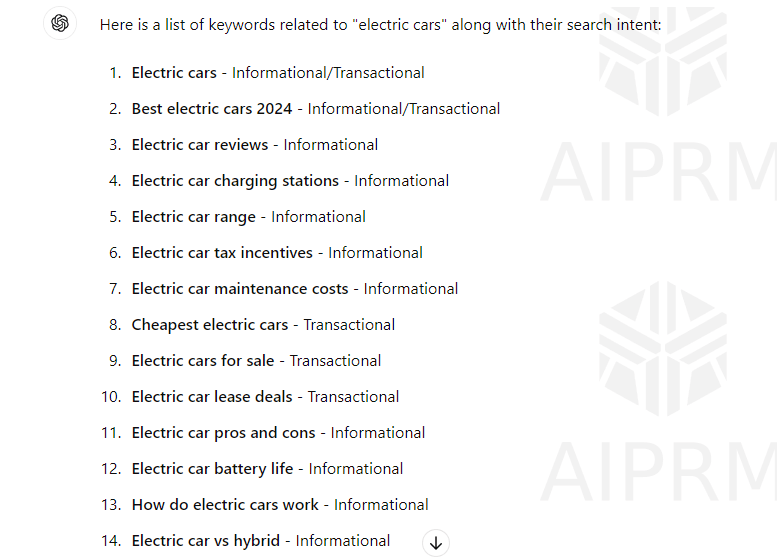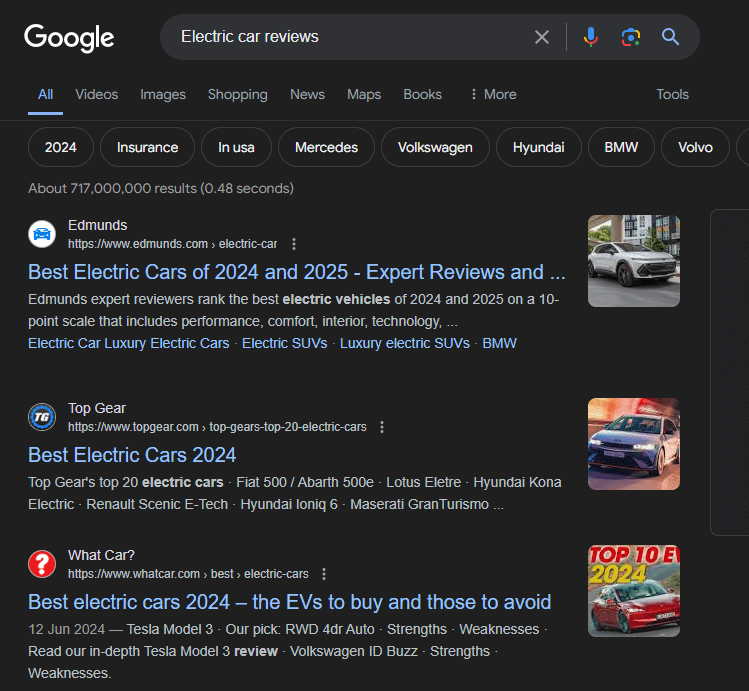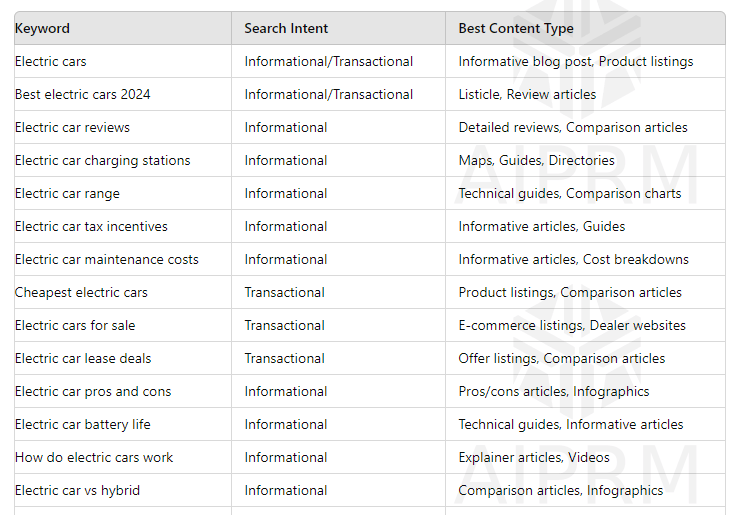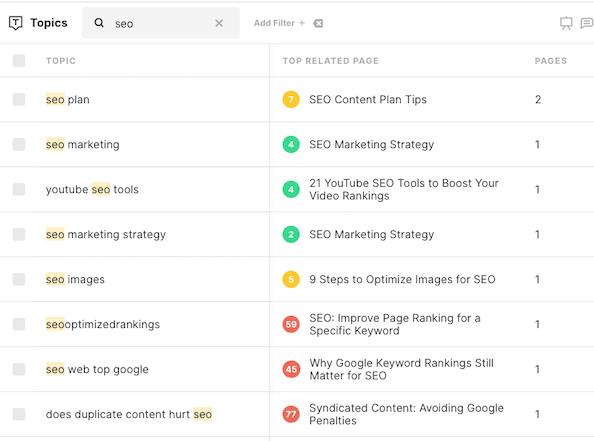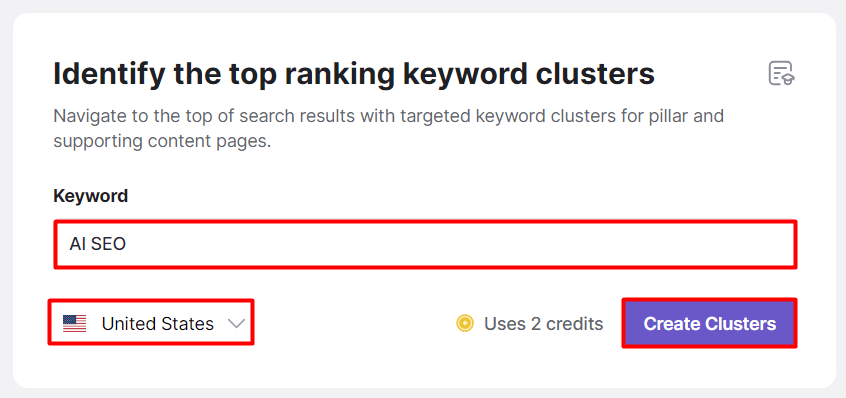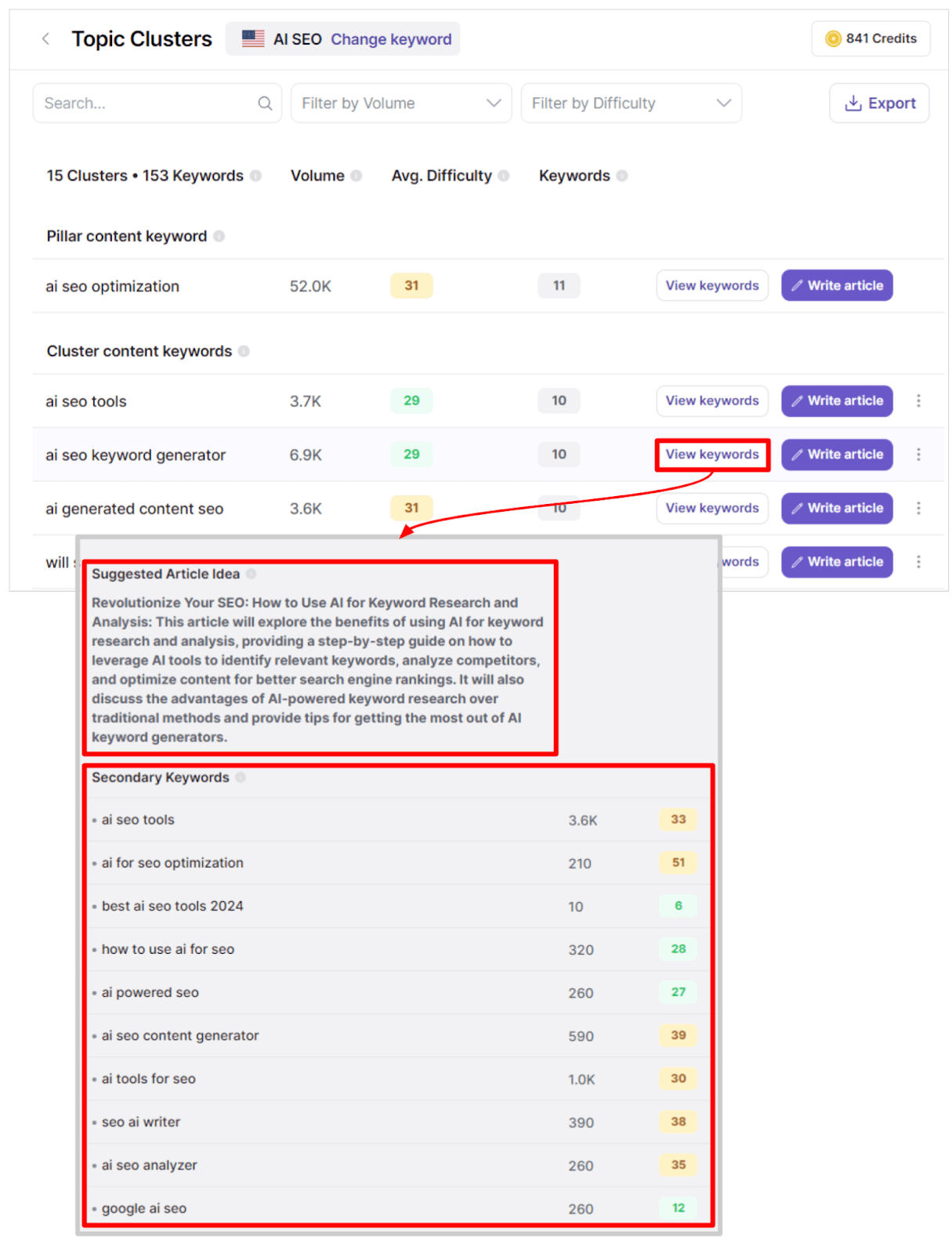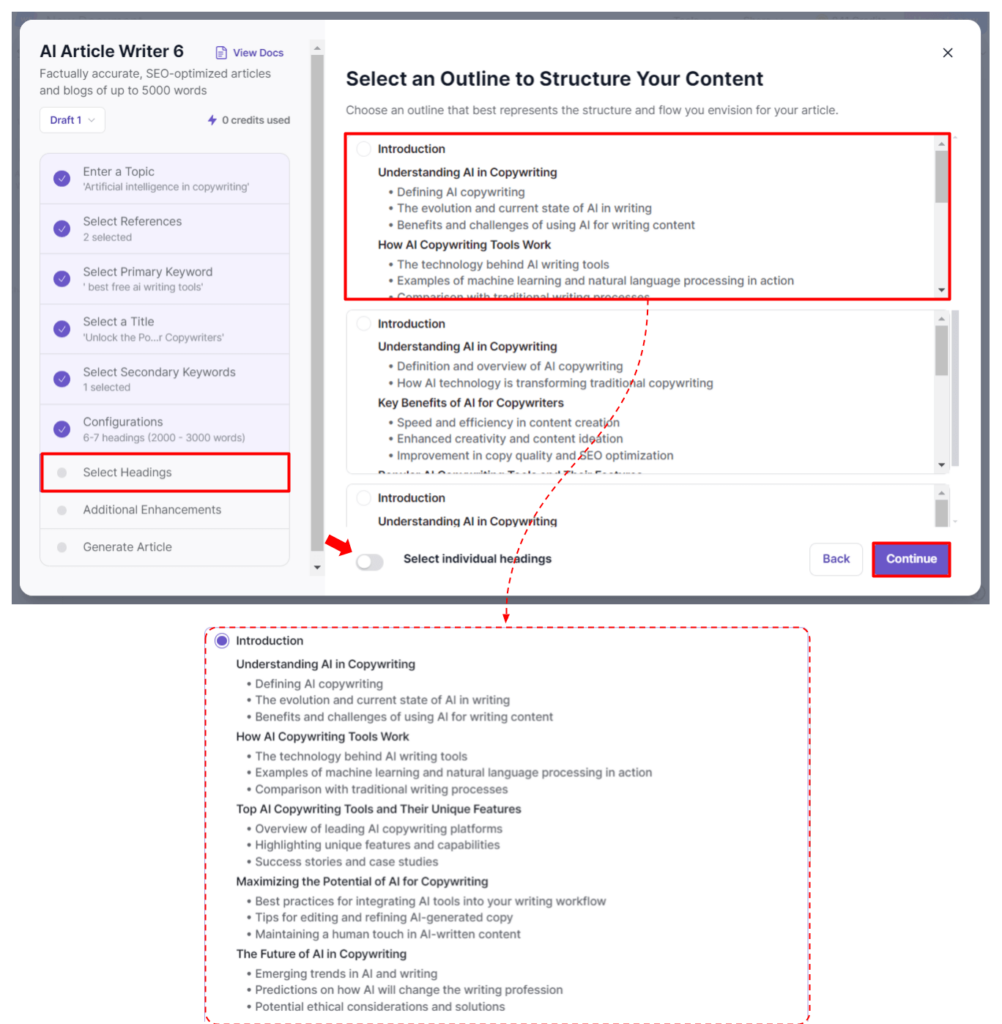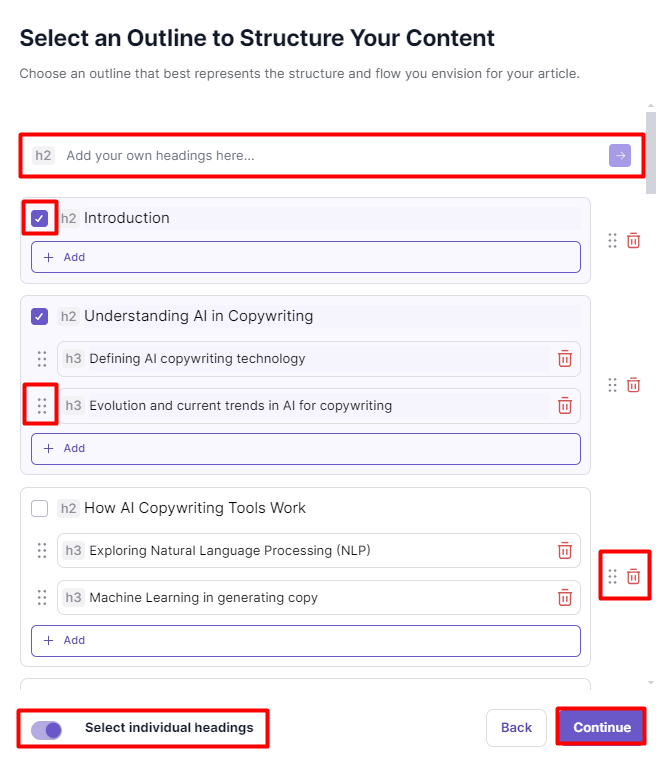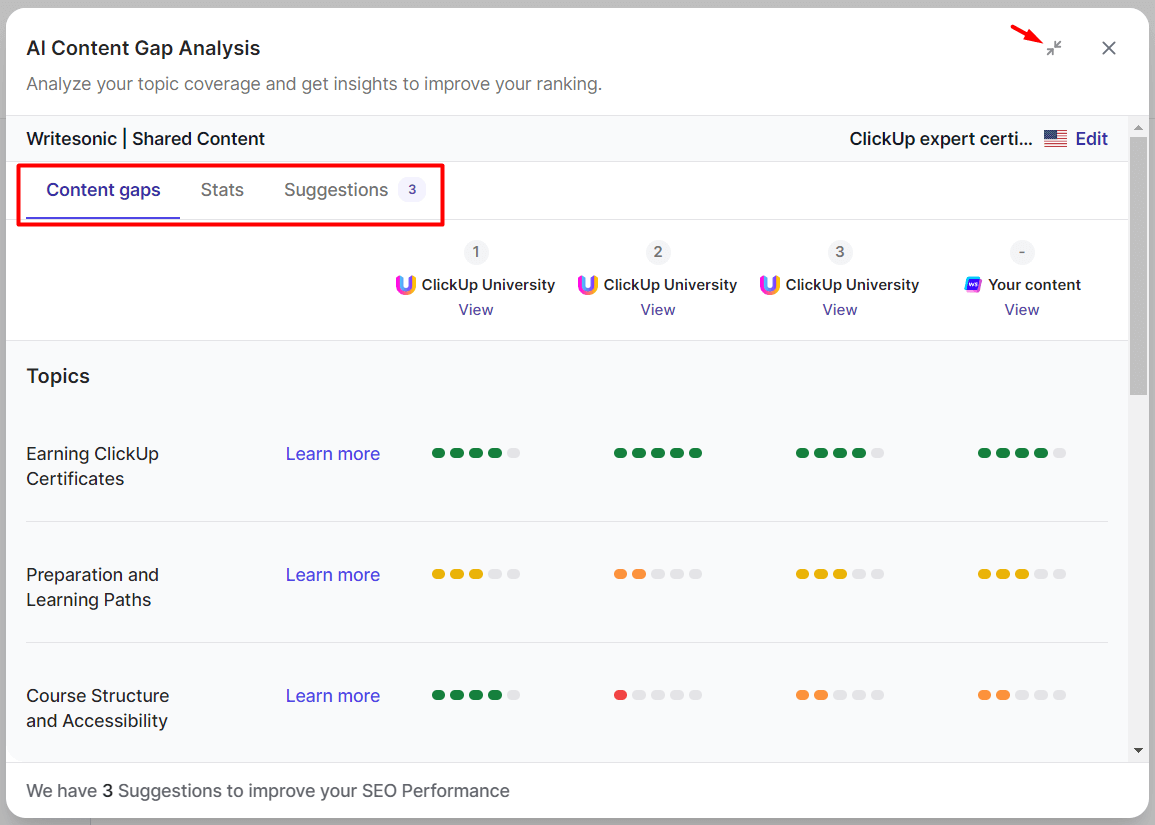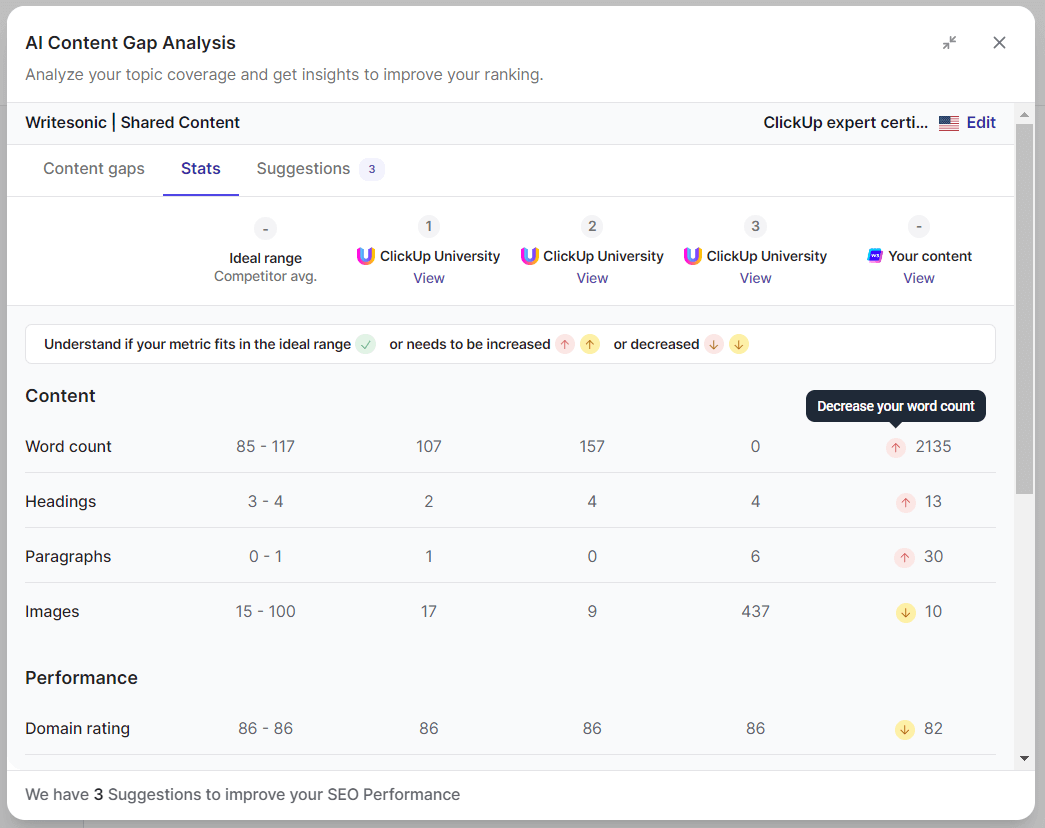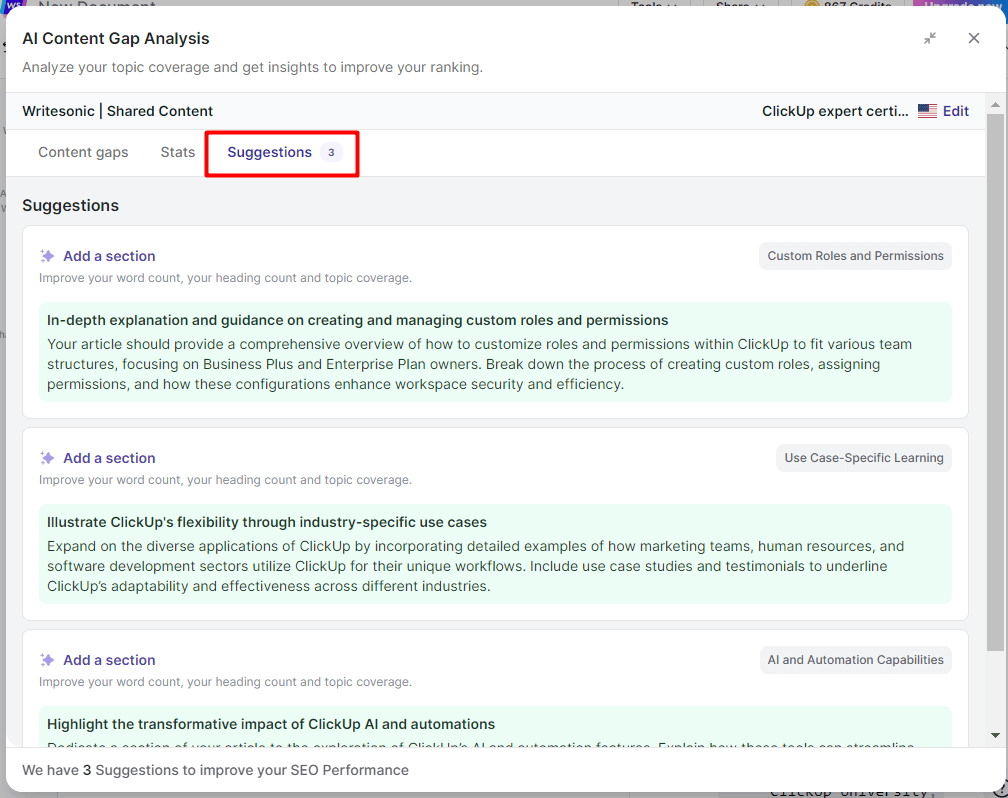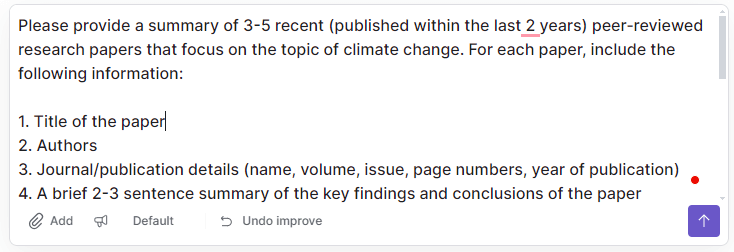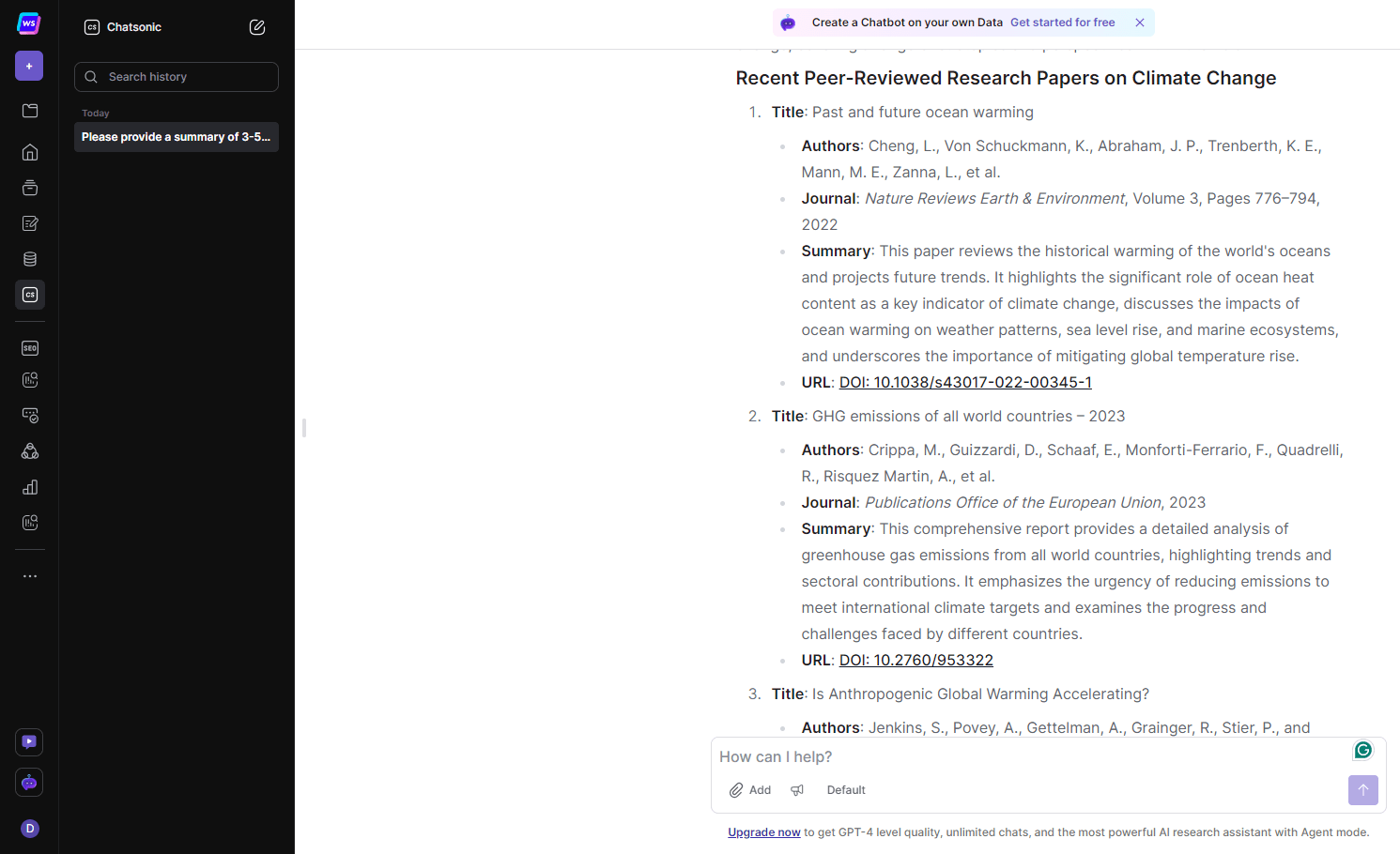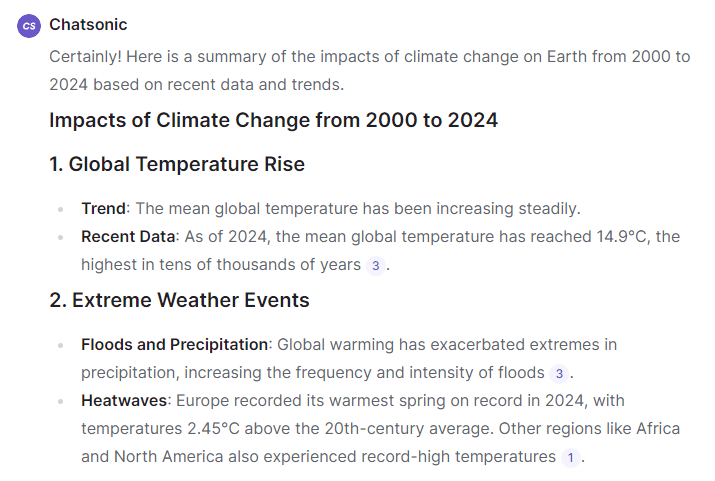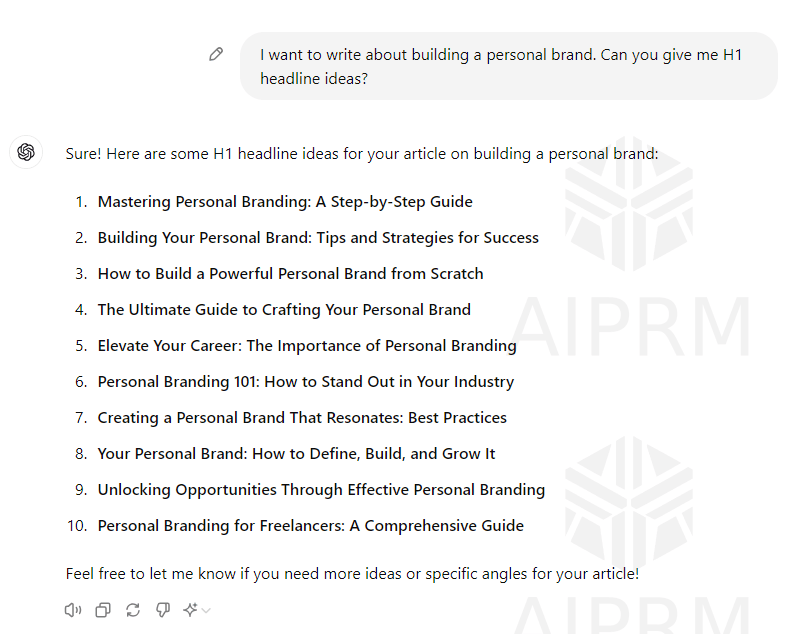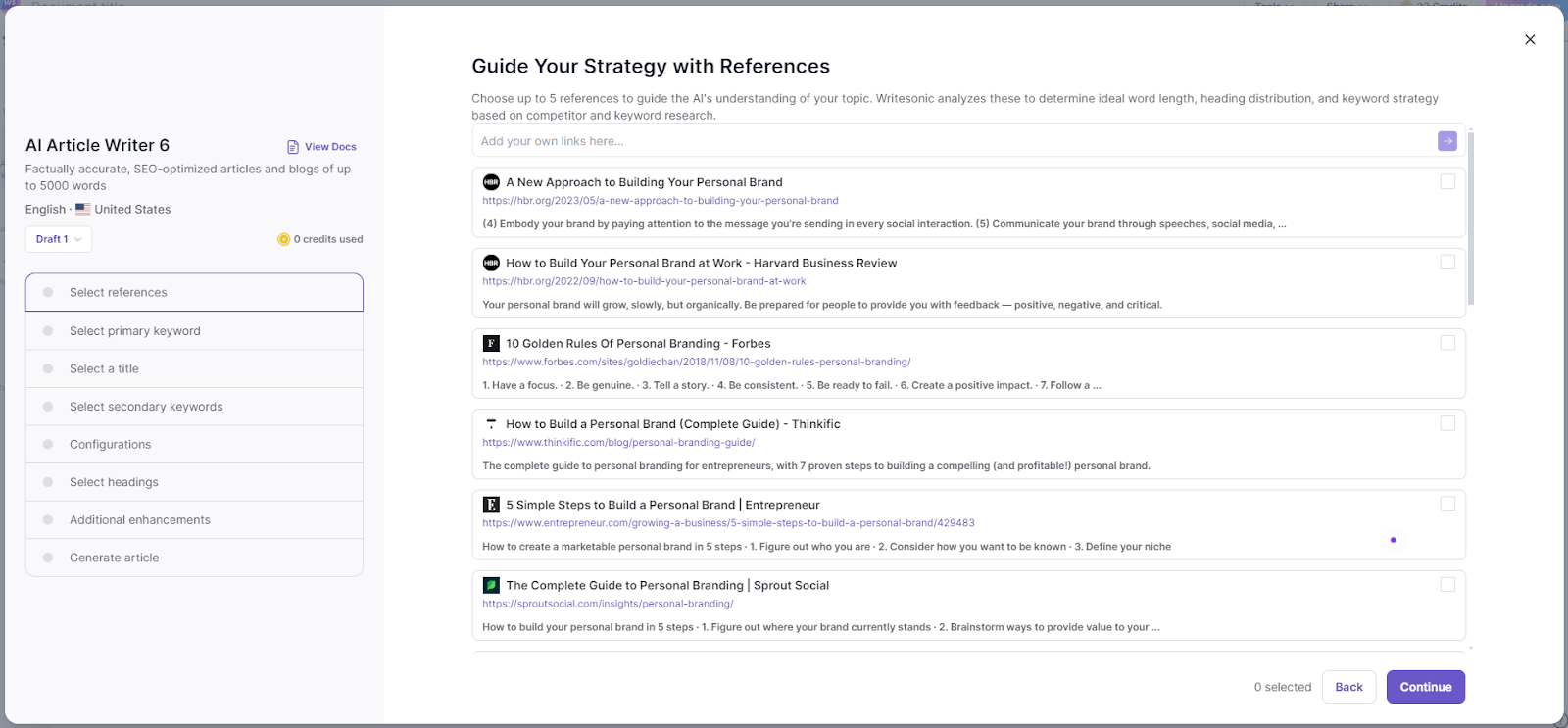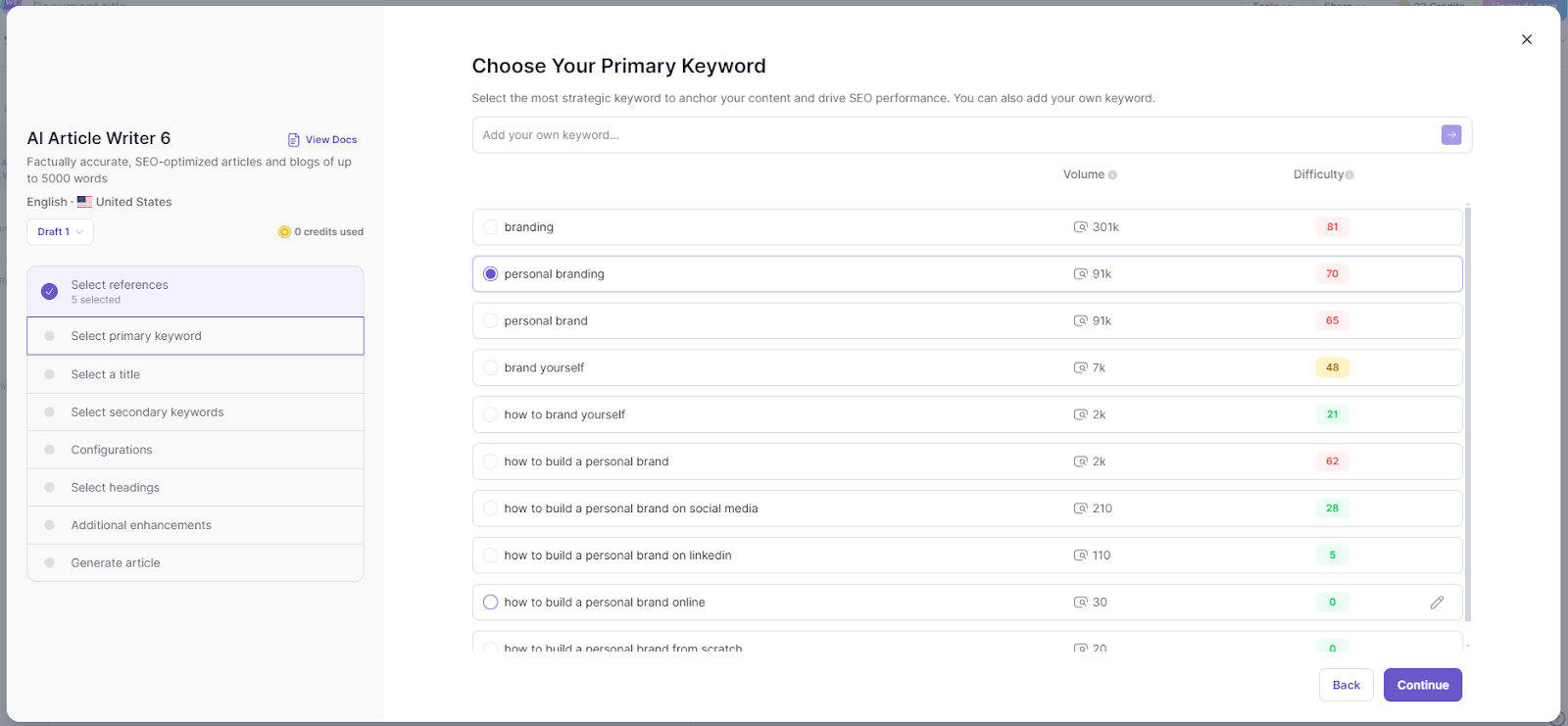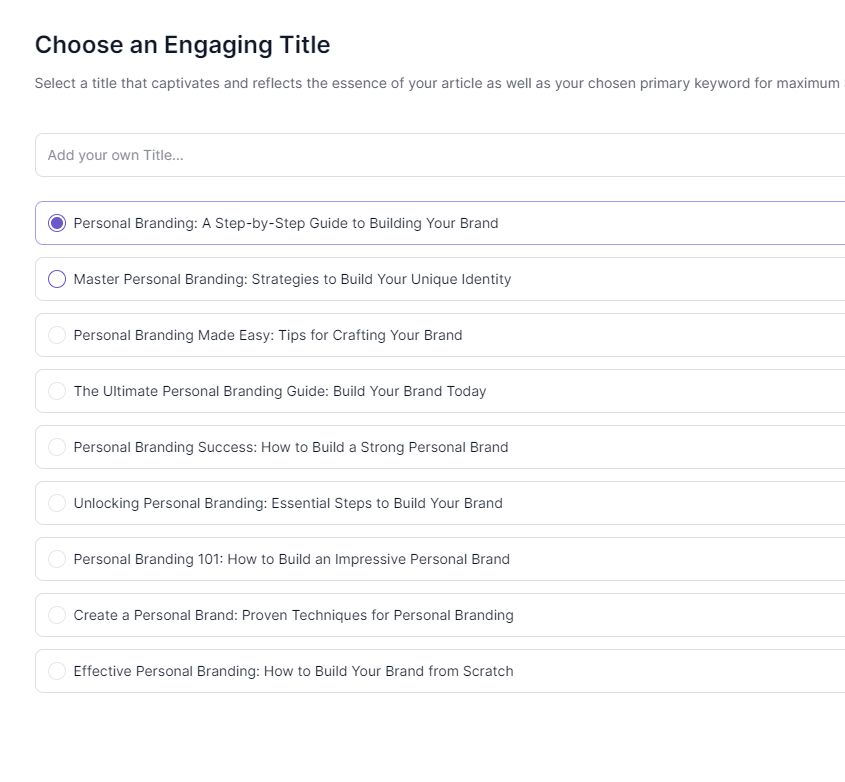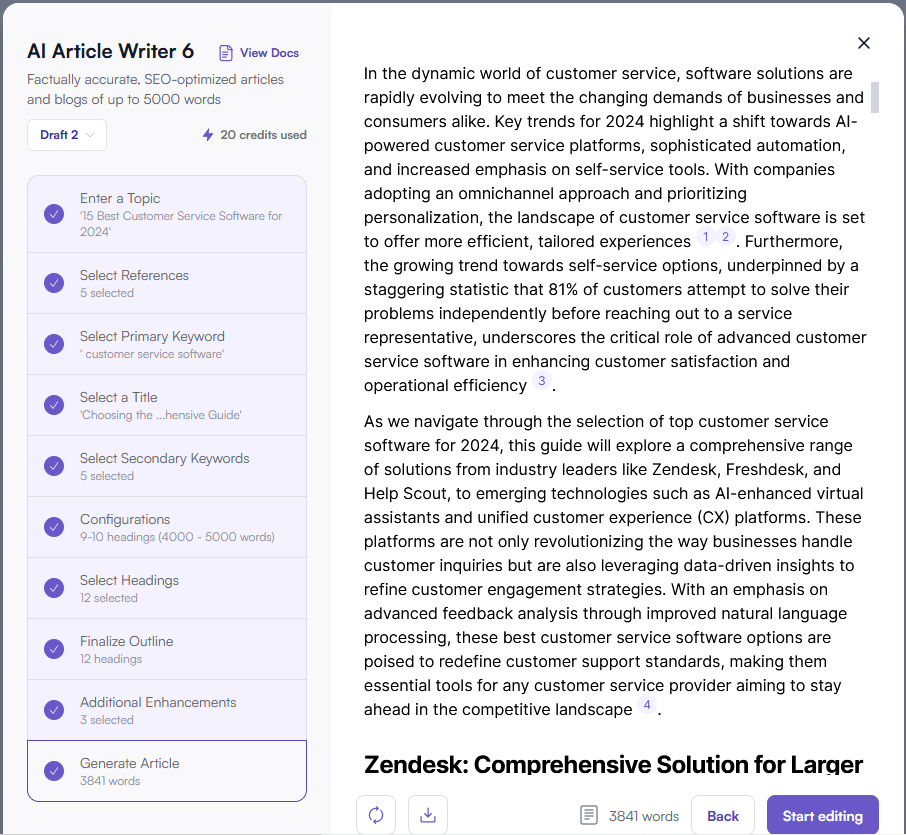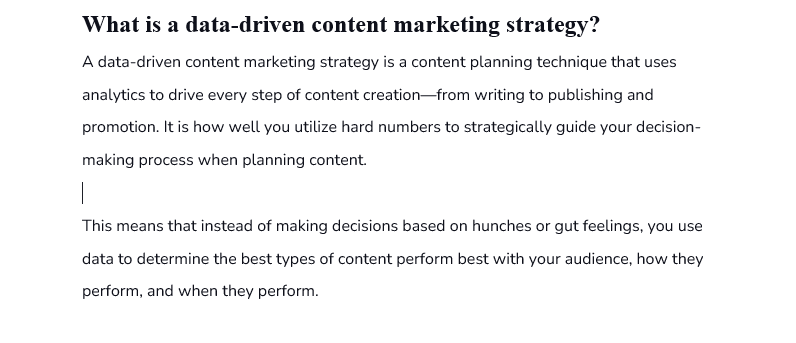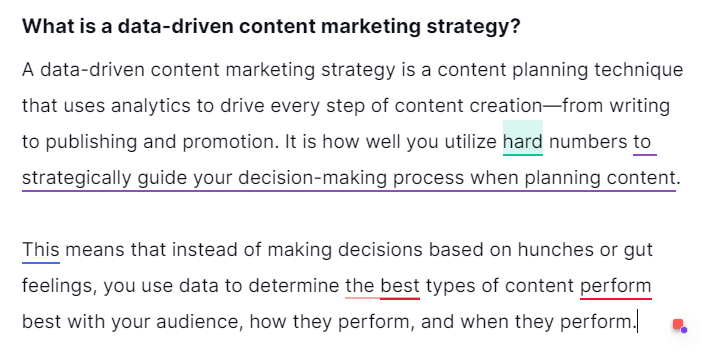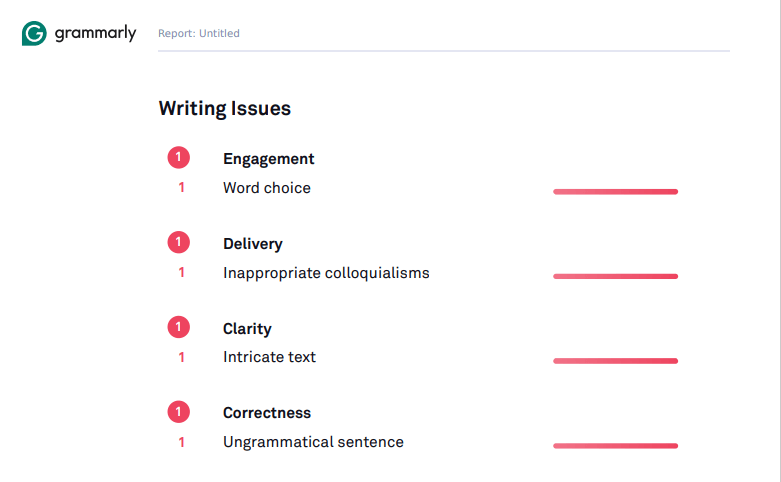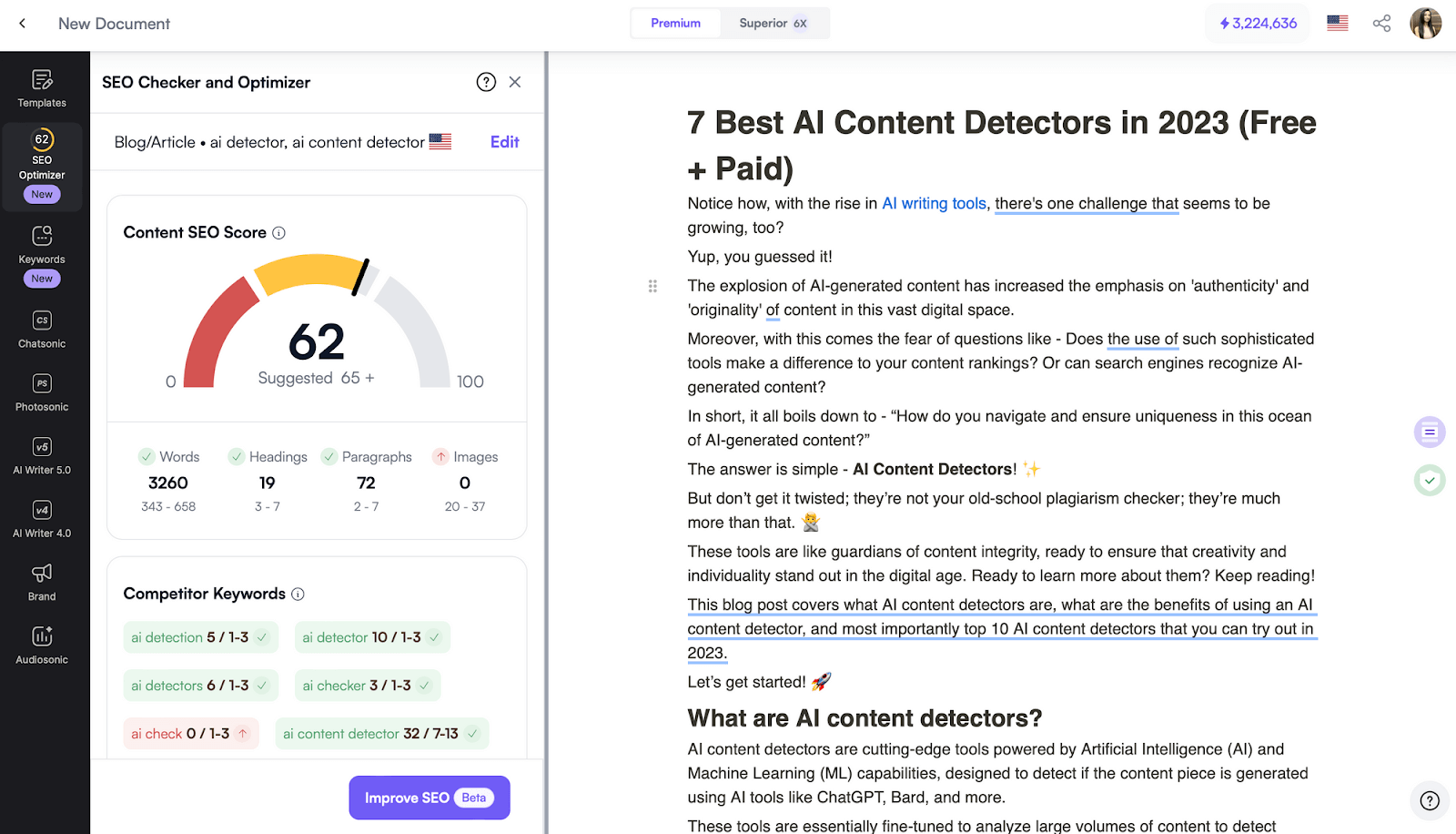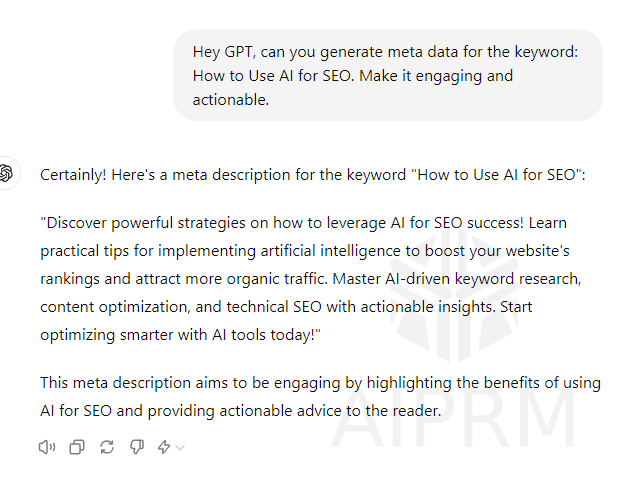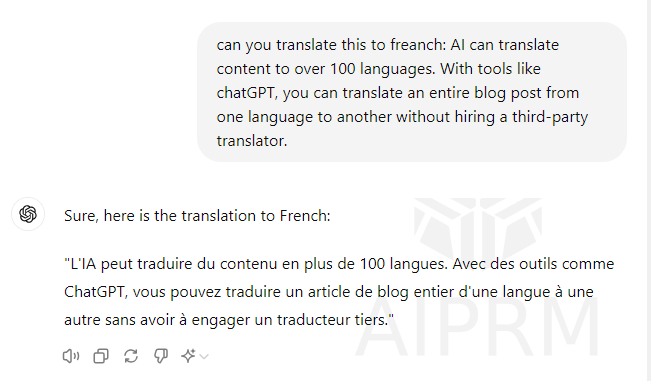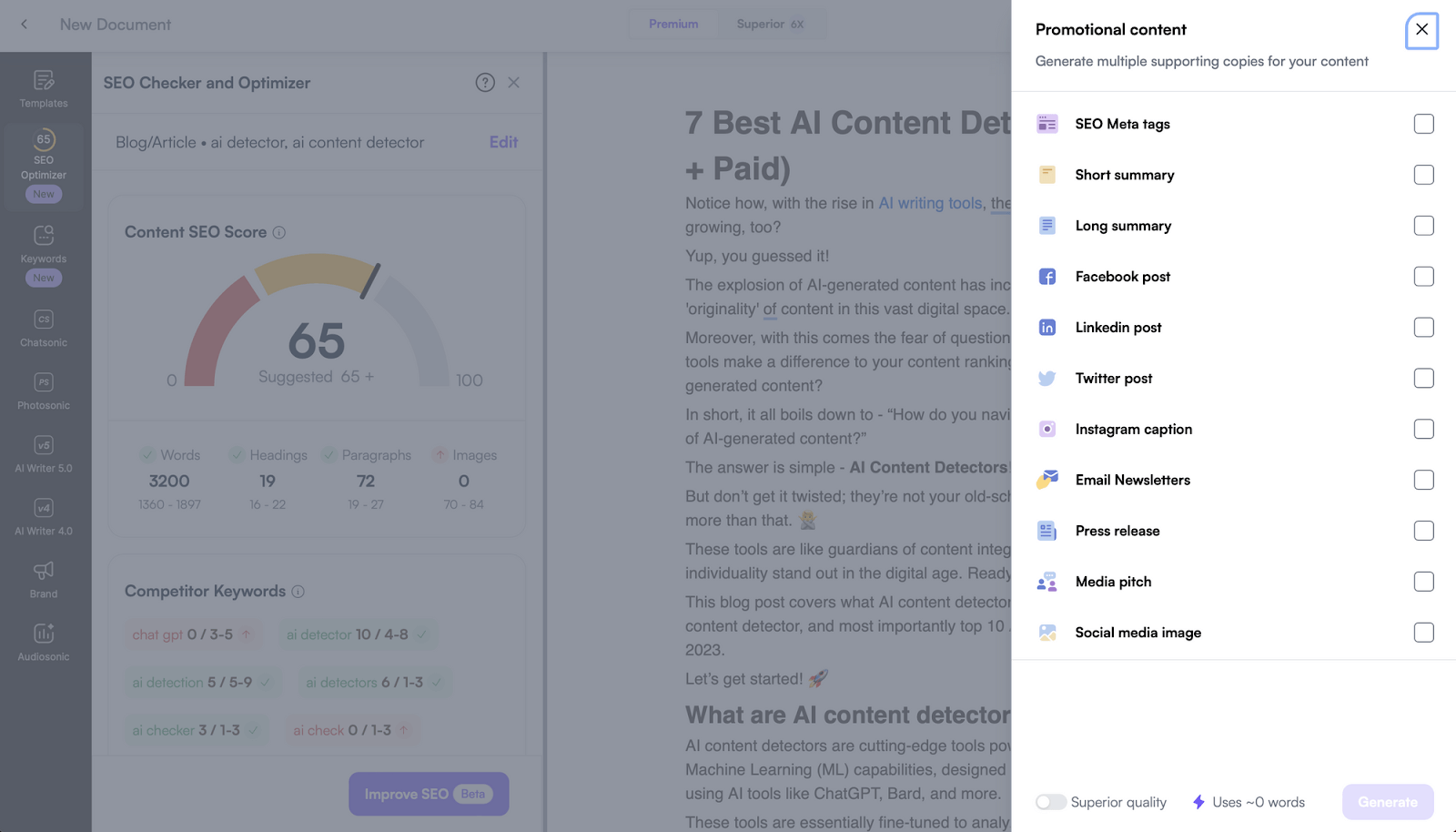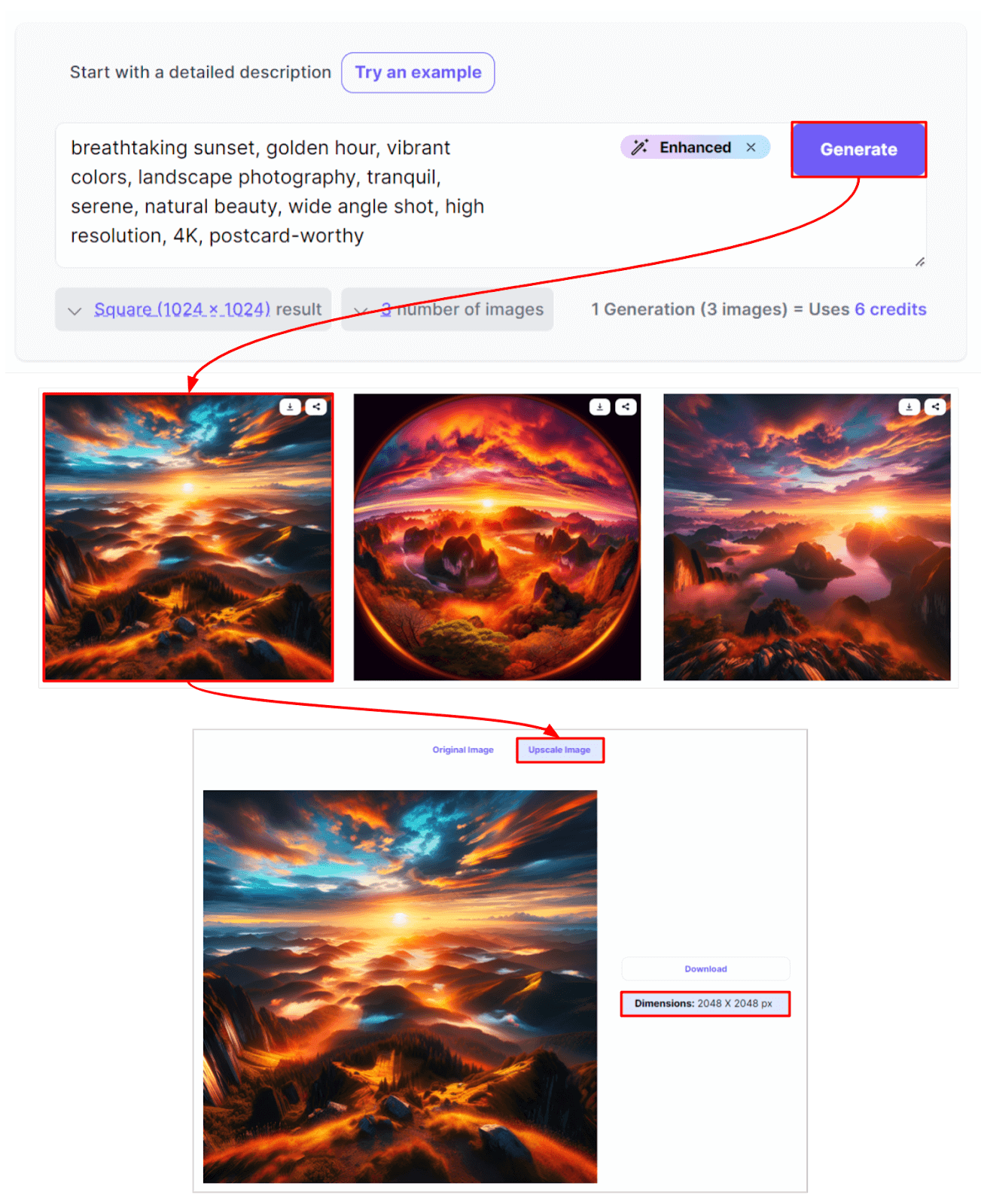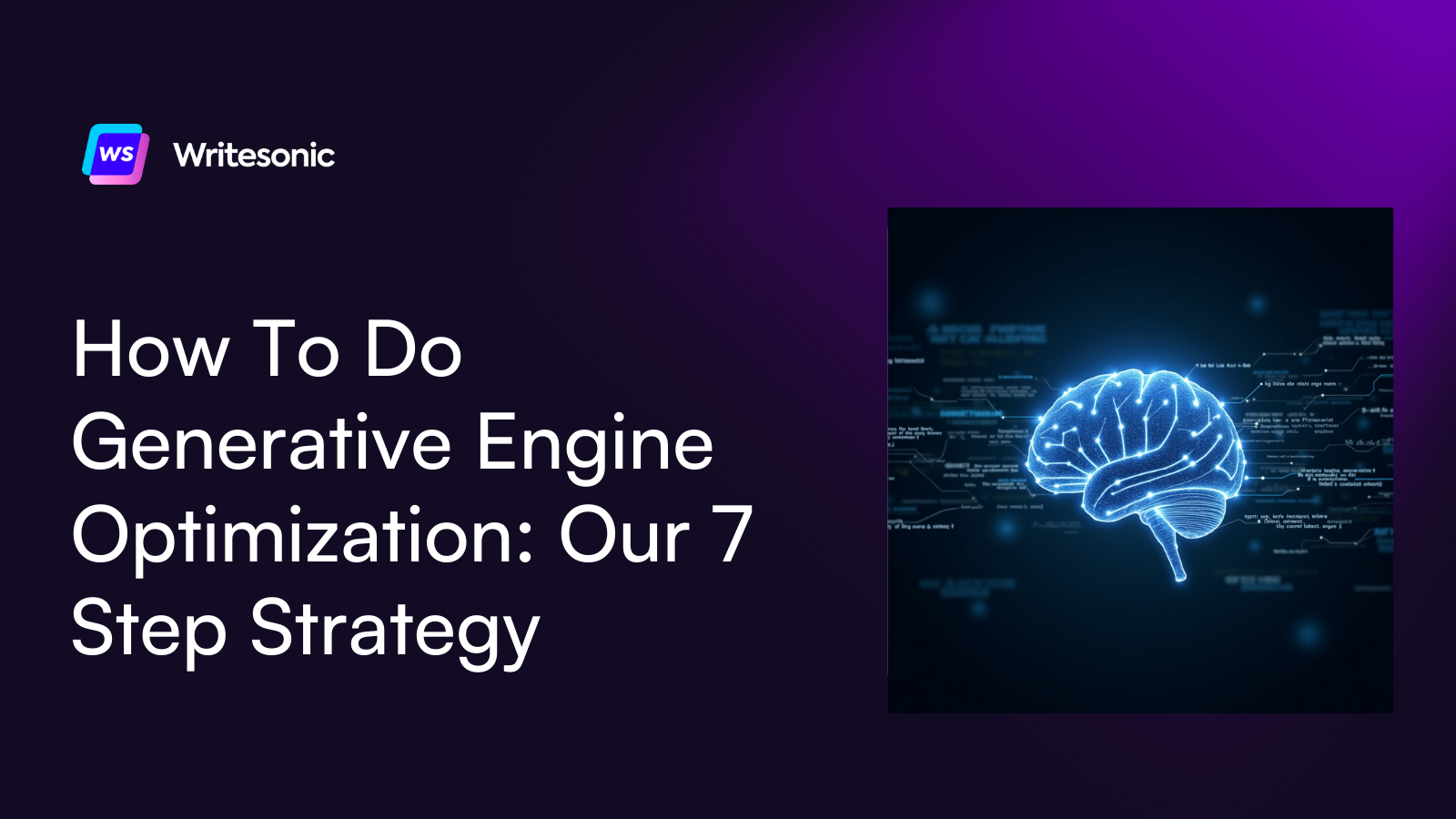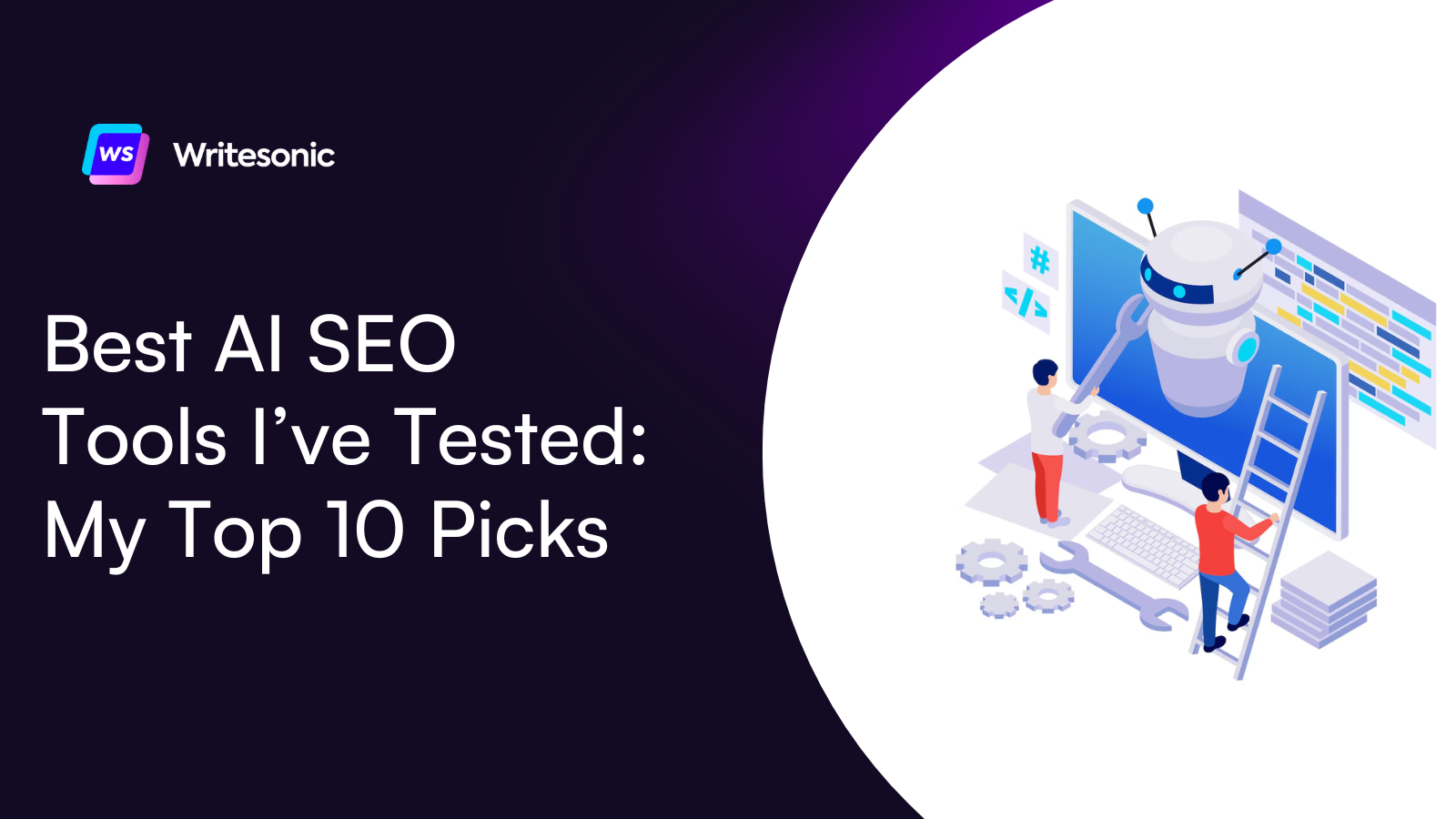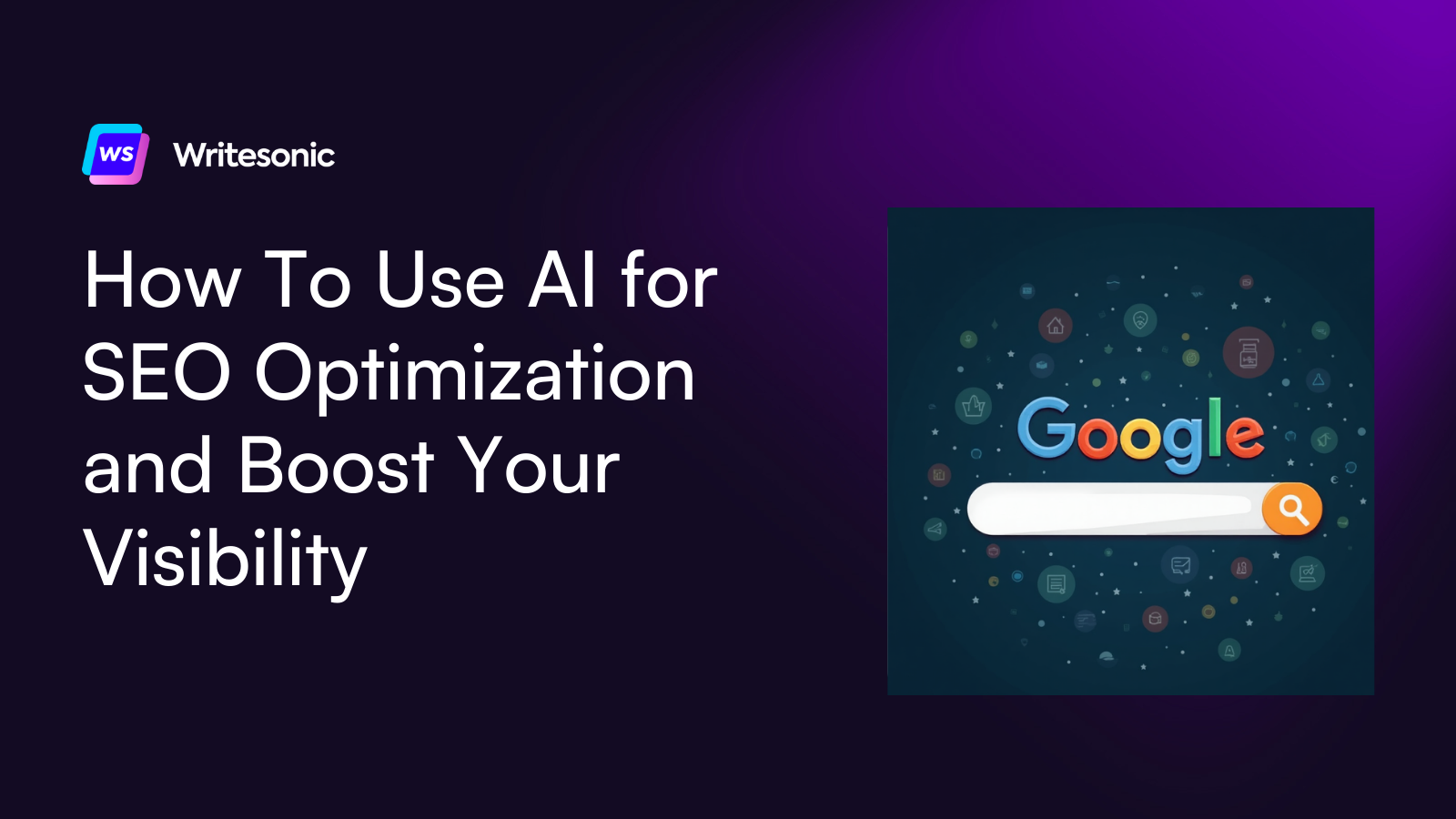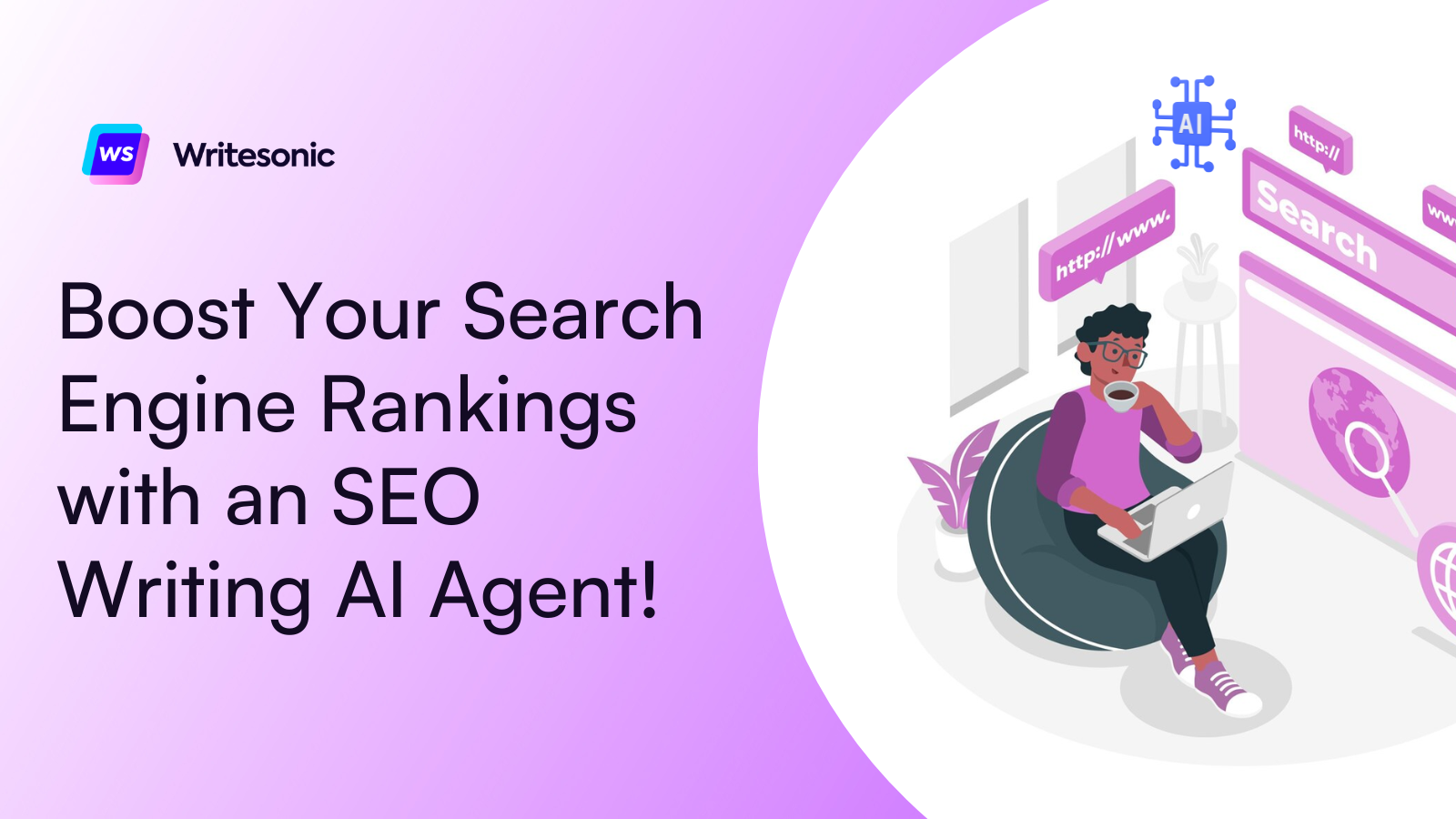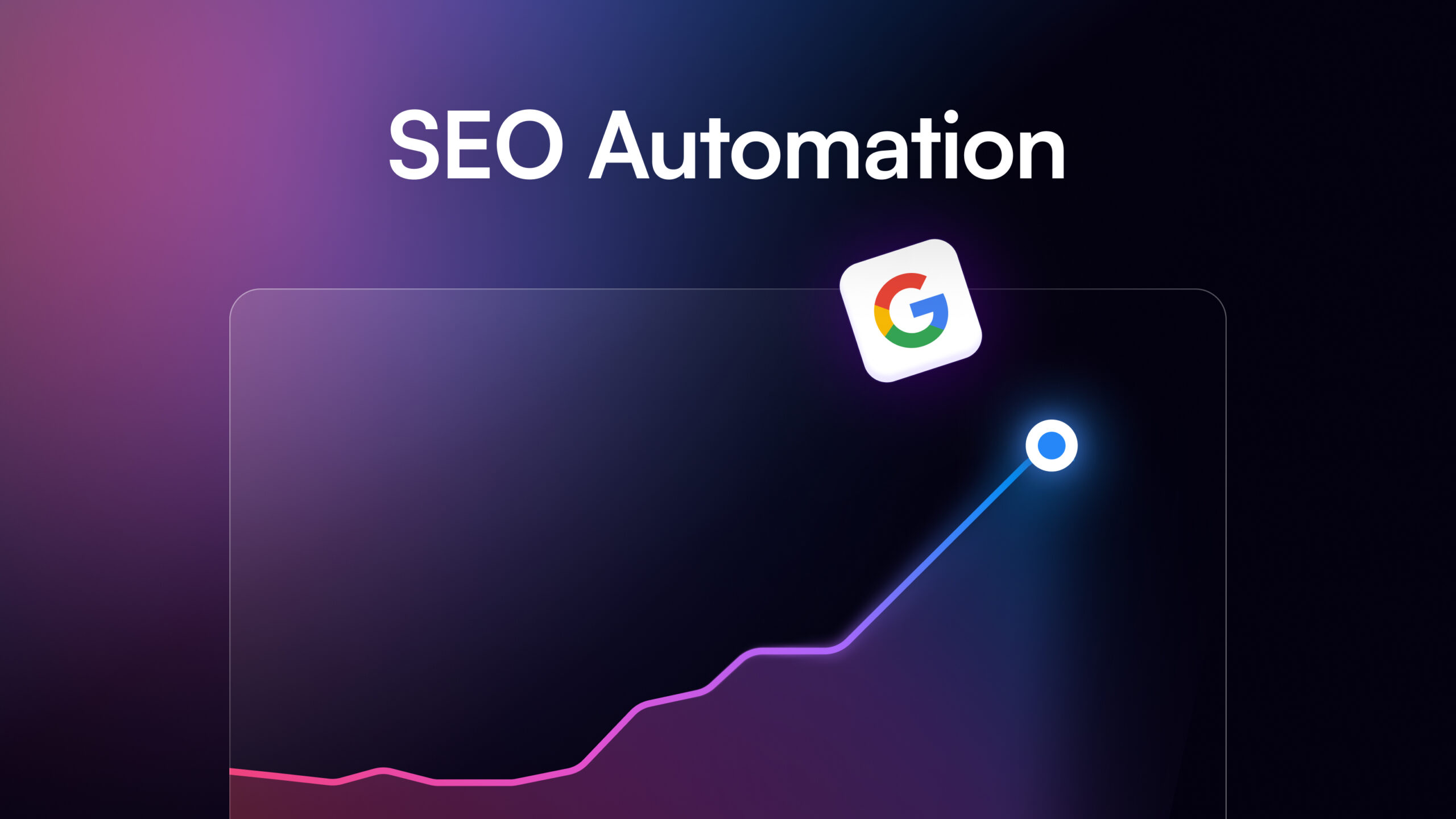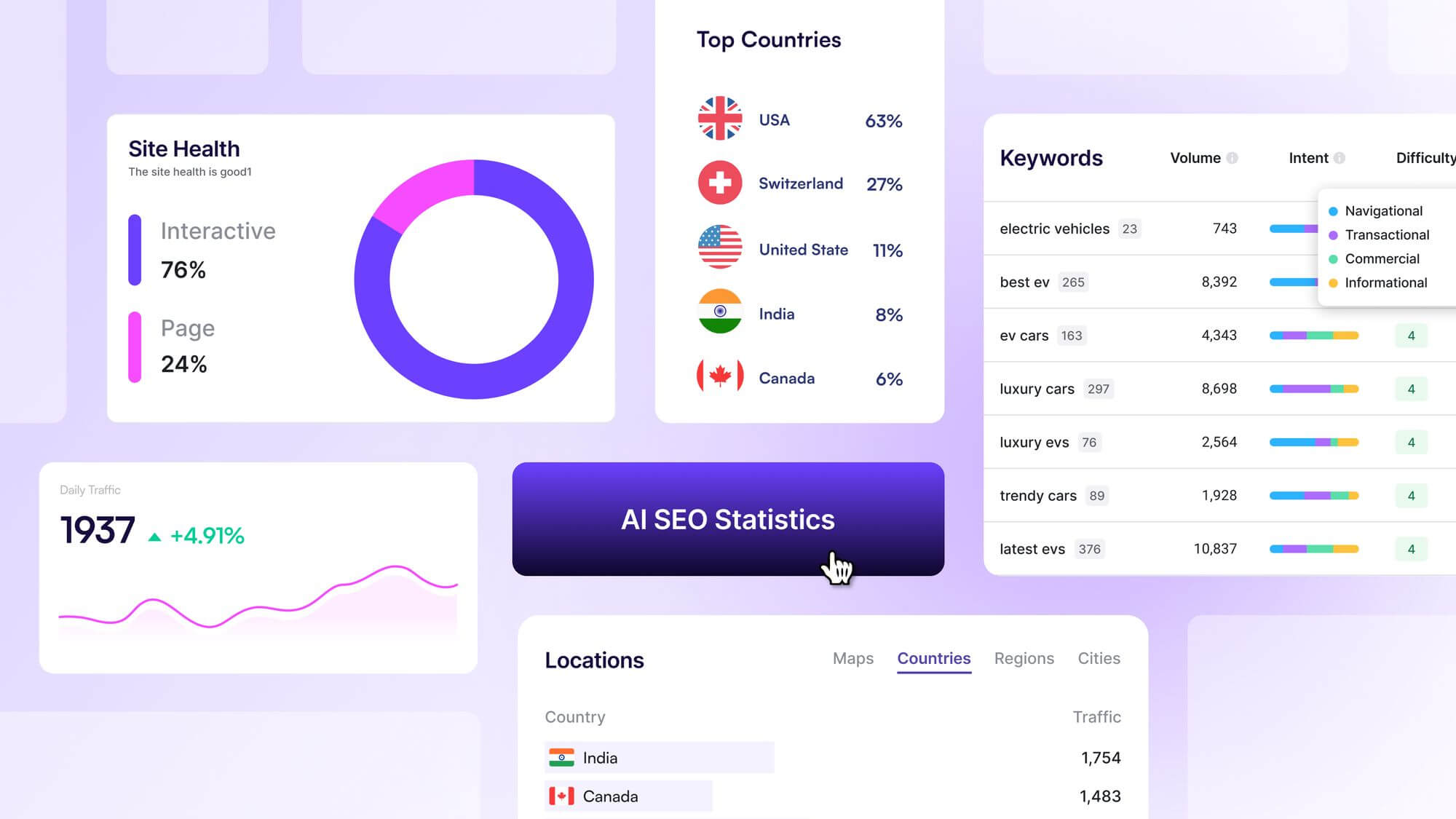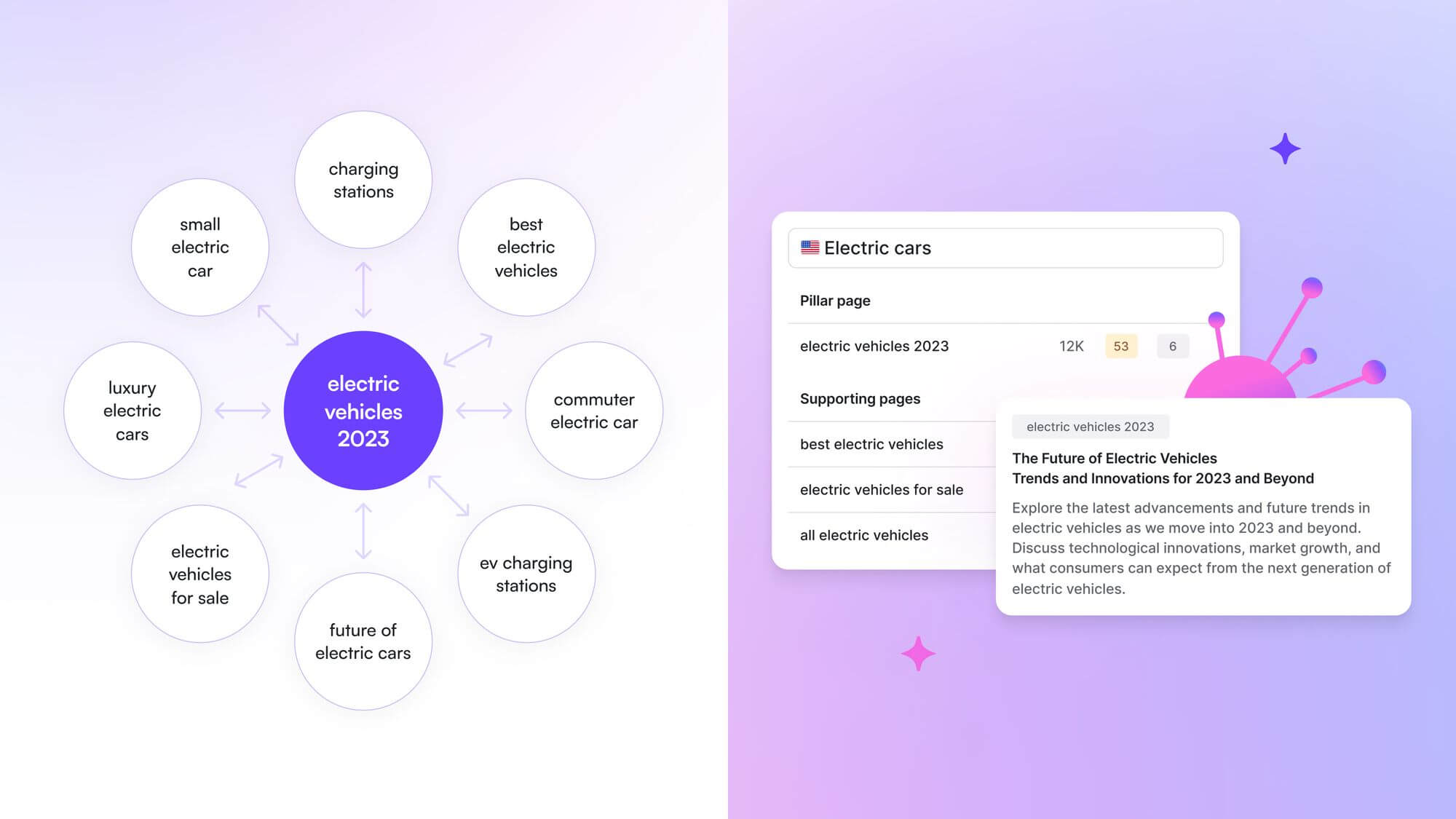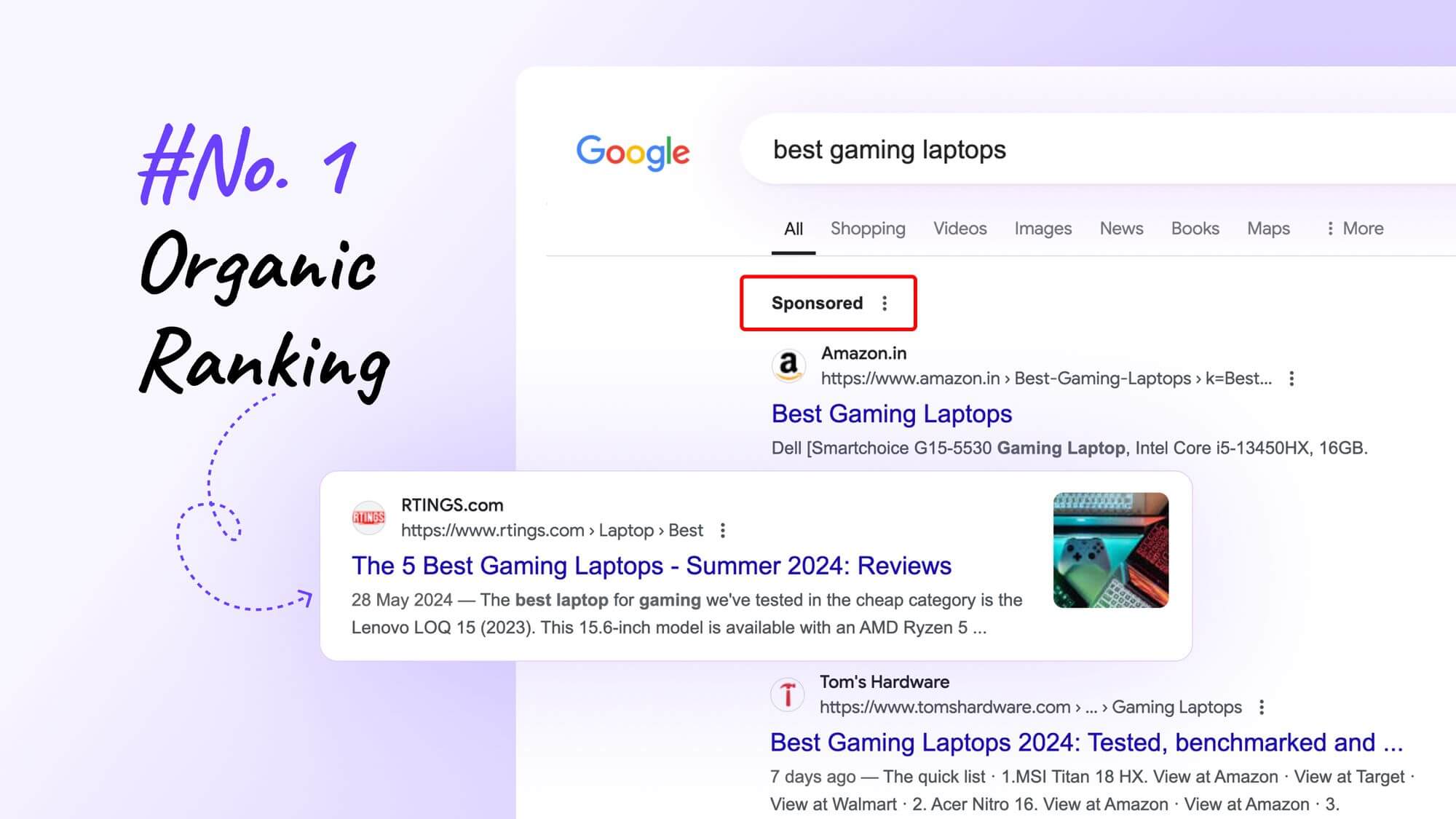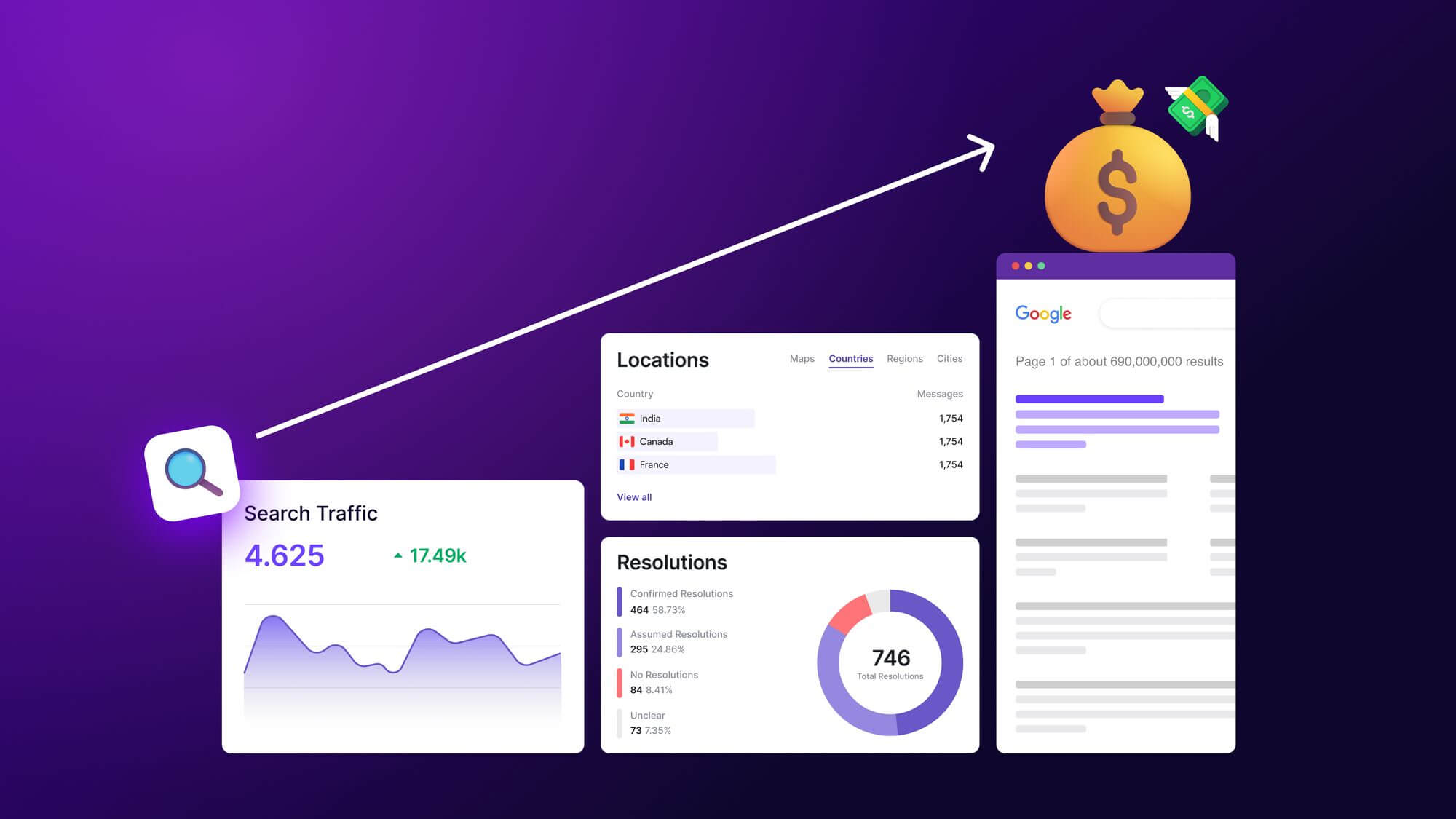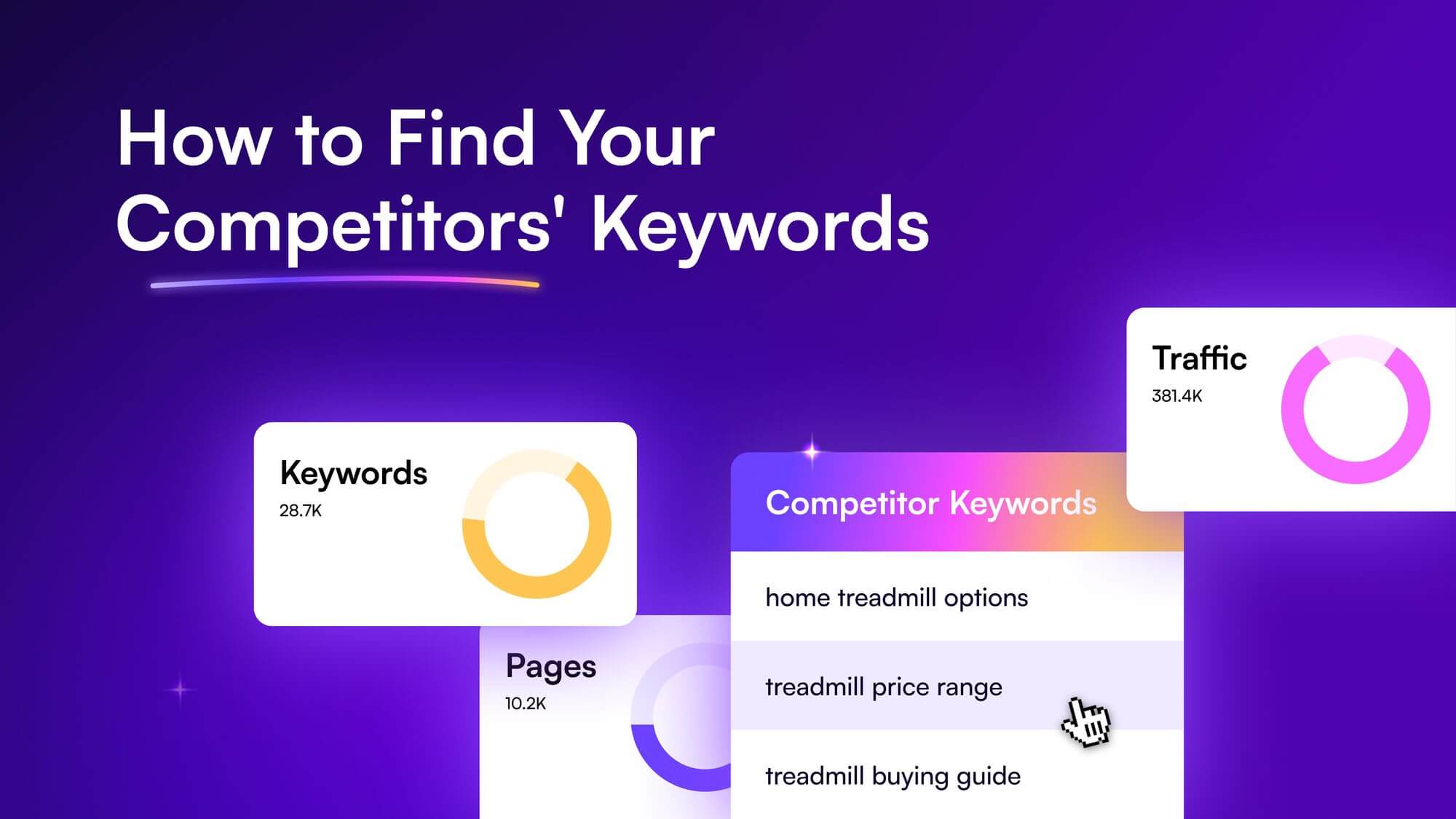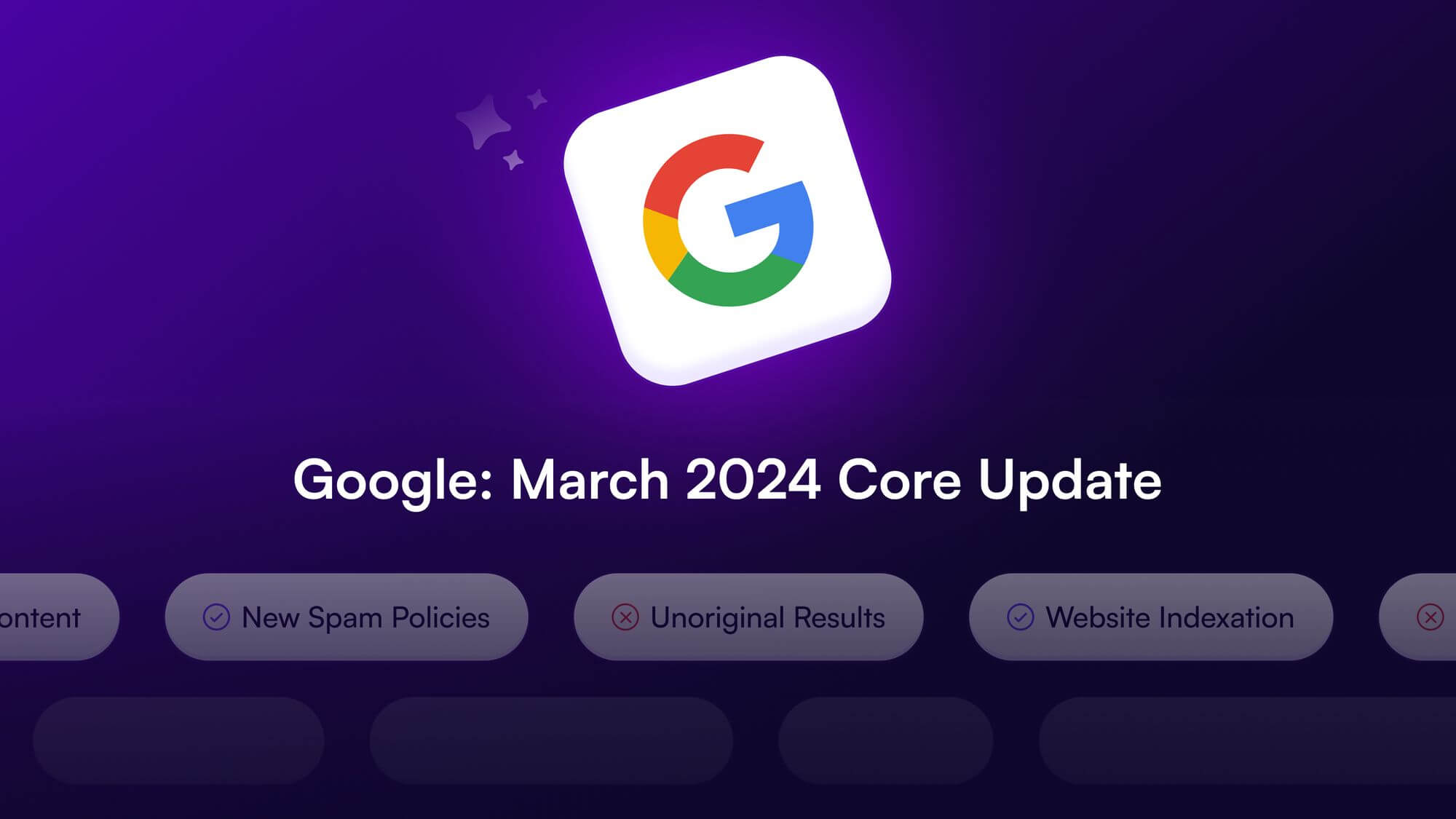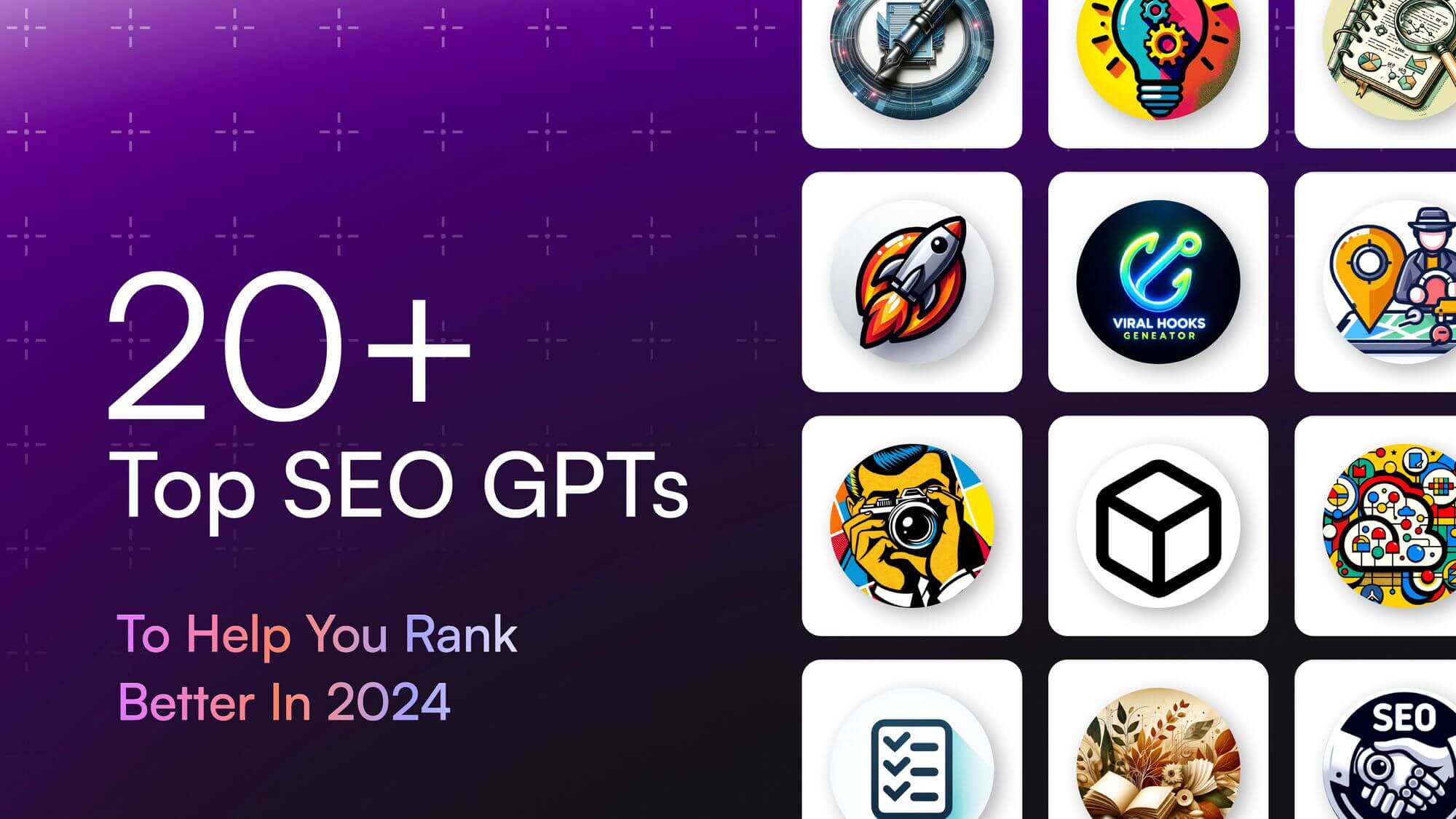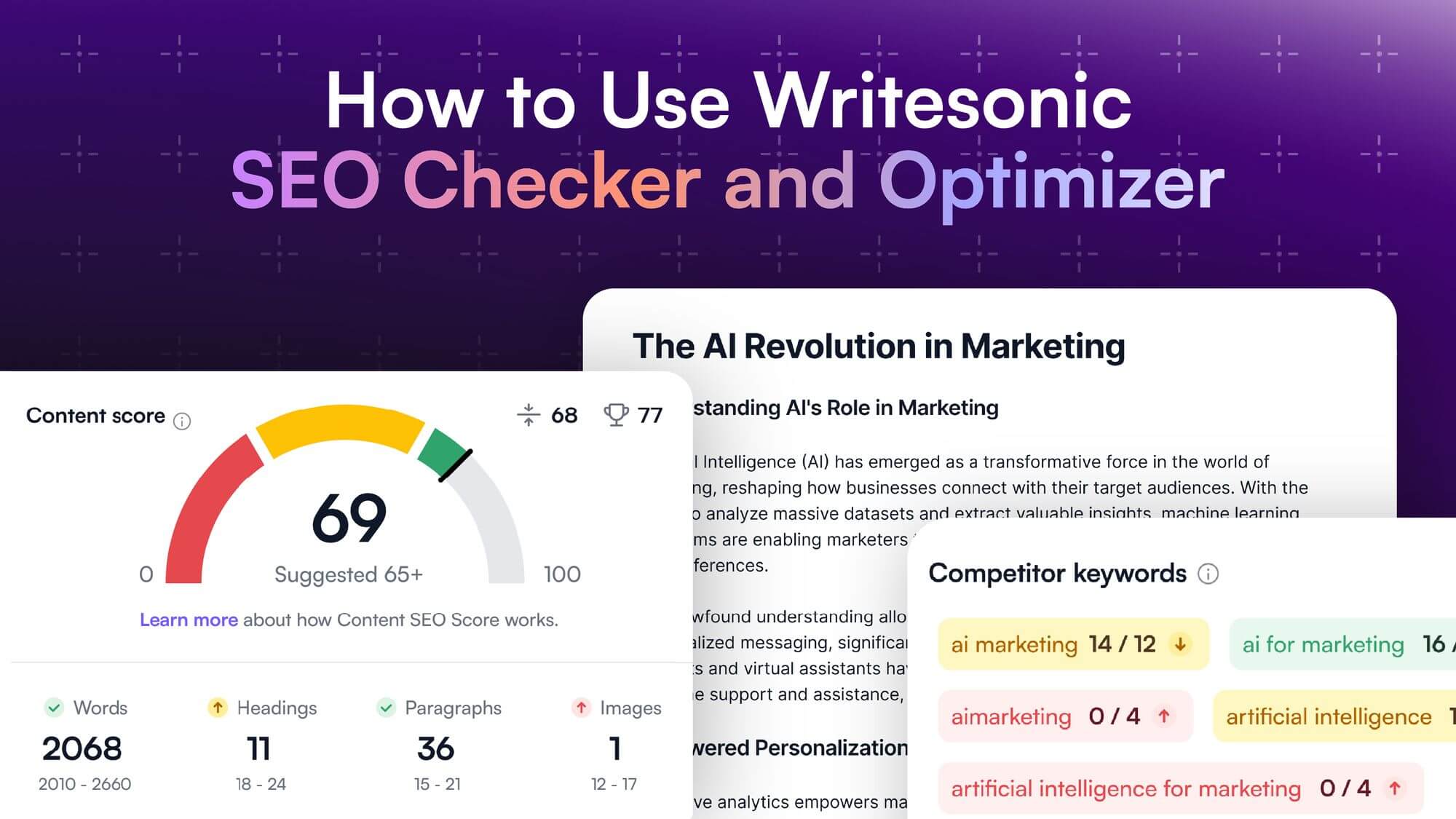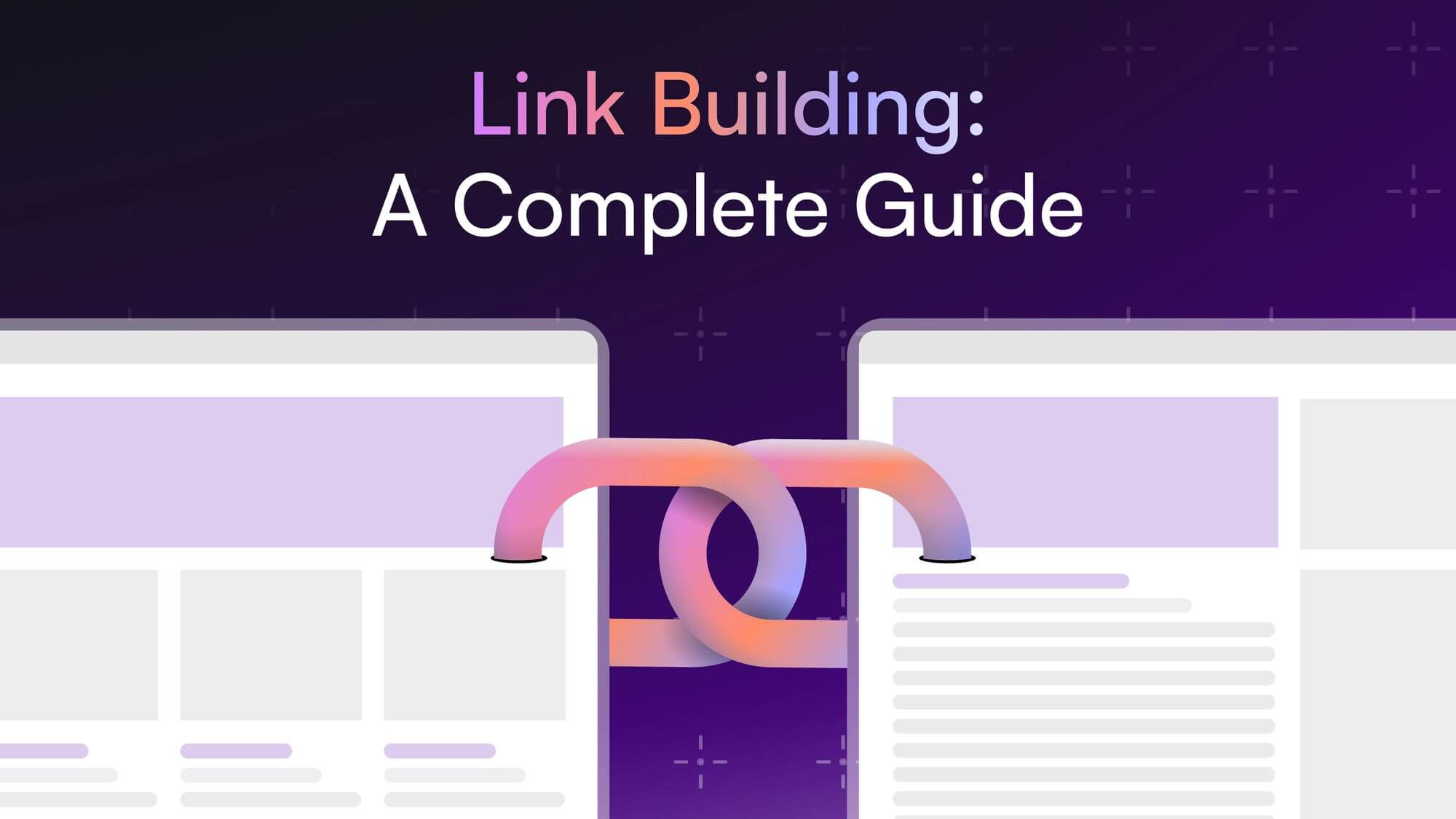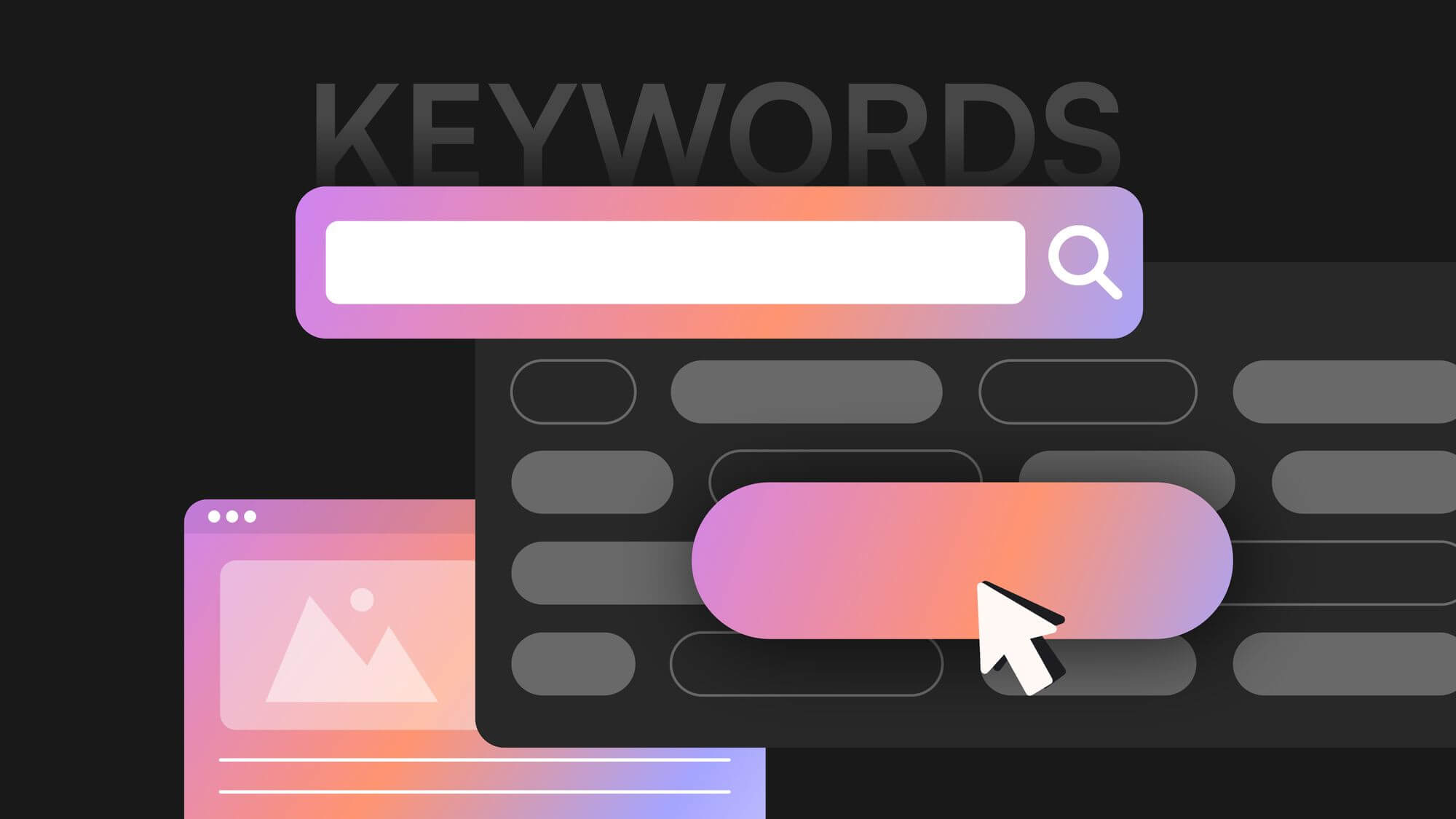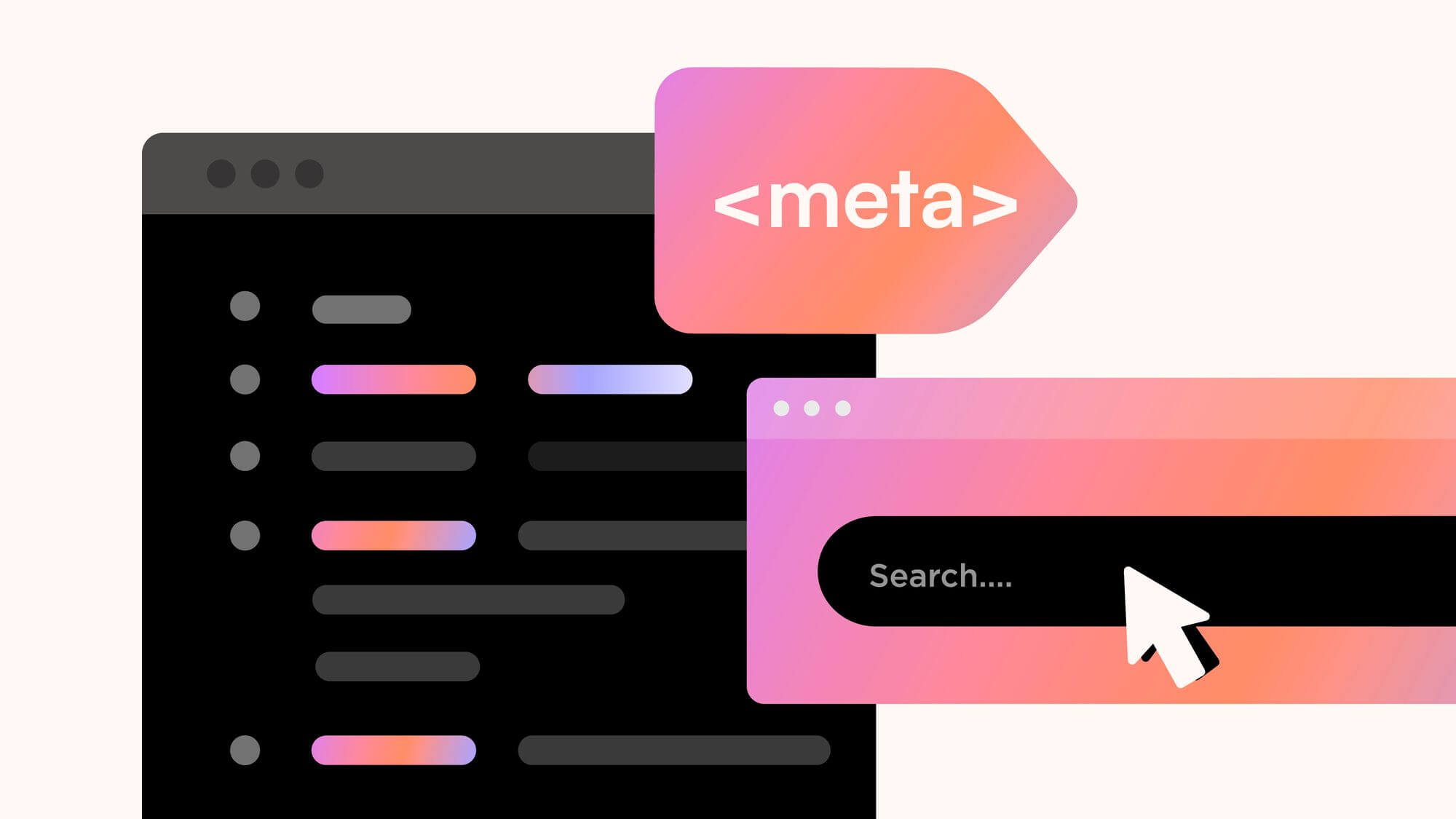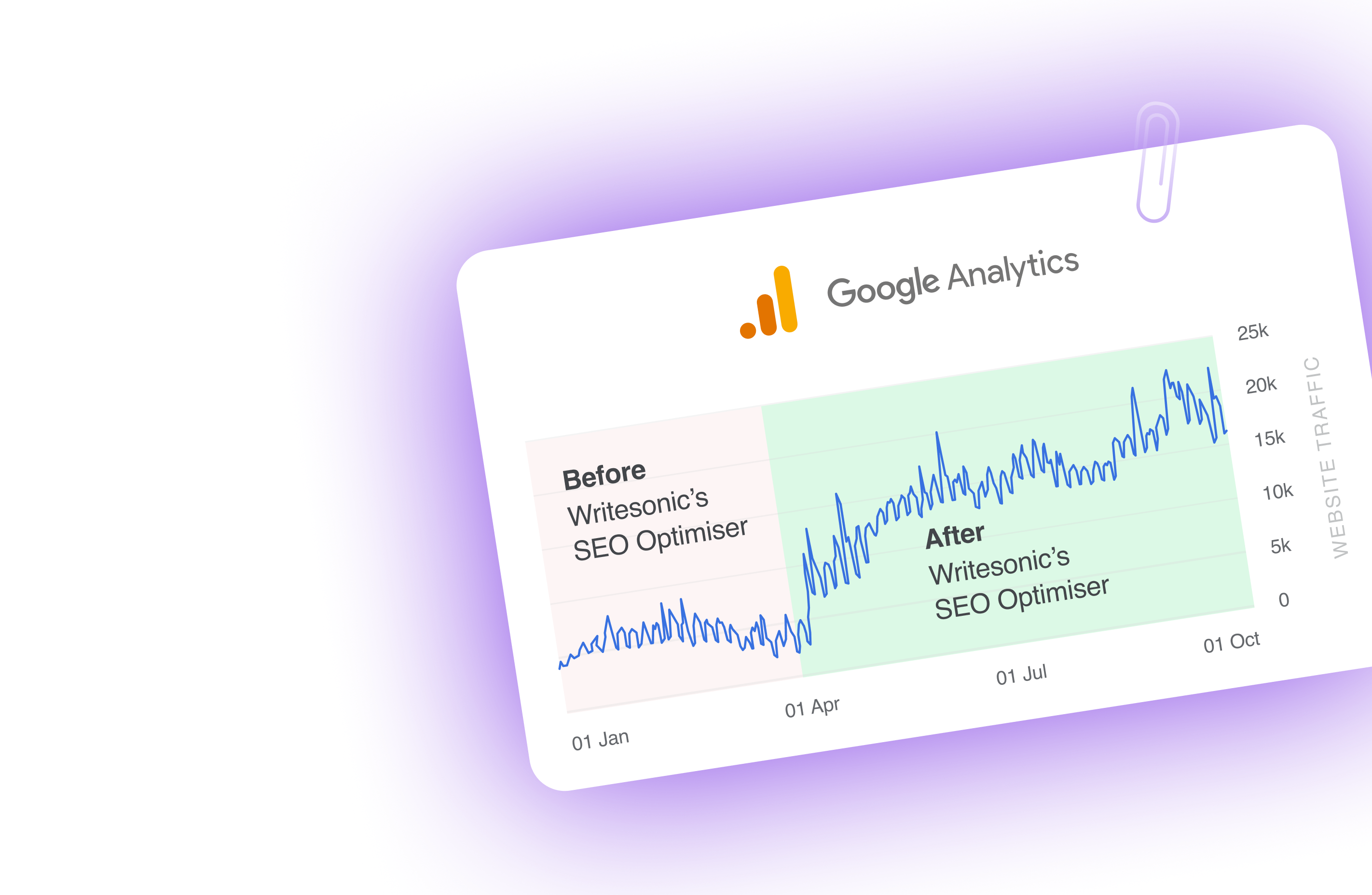One of the most critical steps of owning the top Google spot for desired keywords is ensuring that SEO is set up correctly. SEO is an ongoing process with many moving parts—on-page, technical and link-building.
That’s not to mention the frequent Google algorithm updates that are hard to keep up with.
Given these challenges, it’s understandable that SEO can be complex, manually tasking and time-consuming. Thankfully, lots of SEO professionals now use AI for SEO to automate many of the tedious tasks involved in SEO.
If you want to take your SEO strategy to the next level, utilizing Artificial Intelligence (AI) for SEO is the smart way to go. This article will guide you through using AI in SEO and help you discover its full potential.
What is AI-based SEO?
AI-based SEO involves integrating AI into SEO tools to automate and optimize various aspects of an SEO strategy. These SEO tools use AI to speed up manual tasks and automate repetitive SEO tasks like keyword research, content ideation, optimization and analyzing competitor strategies.
And that’s just scratching the surface of its potential. AI tools have many undiscovered capabilities, but for now, here are some ways to use AI for SEO.
How to Use AI for SEO Optimization?
SEO specialists use AI tools for various tasks, from keyword research to on-page optimization and technical SEO. But that’s not all there is to using AI. Here are some ways to align AI tools with your SEO strategy.
Before Writing
Much work goes into laying the groundwork for a successful SEO strategy to ensure it drives organic traffic. Here are some essential SEO tasks to perform and how AI can help.
1. Automated Keyword Research and Targeting
Keyword research identifies search terms your target audience uses on search engines like Google when searching for information. These could be questions, phrases, or specific words related to a topic of interest.
Before AI, keyword research used multiple keyword research tools to find thousands of keywords. Then, you’d have to gather data on search volumes and manually analyze each keyword in Excel. This was time-consuming and often required the expertise of a senior SEO specialist.
Thanks to AI, this process has been cut short so anyone with basic knowledge can carry it out. AI-powered keyword research tools, such as Writesonic’s Keyword research tool, can help find valuable keyword ideas quickly.
To get started, Writesonic asks for a seed keyword or popular phrase related to your business to generate a list of keywords. For example, if you sell fashion items, your seed keyword might be “sustainable fashion.” This is your primary keyword.
For each keyword, Writesonic displays its search volume, keyword volume, difficulty, potential traffic, high-potential keywords and questions. These keywords can be used to optimize website copywriting or inputted into blogs to optimize it.
For example, the phrase “fast fashion vs. sustainable fashion” can be added as a heading in the article to make it more optimized.
Writesonic’s keyword research tool also goes beyond the seed keywords and suggests variations of keywords, including long-tail keywords, short-tail keywords, product keywords, competitor keywords and more. These are the secondary keywords.
2. Analyze Search Intent
Part of creating helpful content that ranks is understanding the search intent behind the keyword. In simple terms, this means identifying the goal of a user’s query and creating relevant content that meets that need. This could involve answering questions, buying a product, finding information, or reading up on a topic.
In SEO, search intent is categorized into four types: information, commercial, transactional and navigational.
Once you have your list of keywords, AI tools like ChatGPT can help identify the search intent for each one. This saves you time from manually researching and analyzing SERP results to understand user intent.
I asked ChatGPT to give me a list of keywords for the term “electric cars” and the search intent.
Here’s the output it displayed:
Let’s do a quick test comparing ChatGPT results to SERP results for the keyword “Electric car reviews” to see if the intent is truly informational.
The first three Google search results are blog posts, which tells me that people are looking for information about the search term.
Taking it further, I asked ChatGPT for a list of content types that would satisfy this intent. Consequently, this removes much of the guesswork and helps businesses targeting this keyword know what kind of content they should create to rank.
3. Content Audit
Auditing existing content is challenging, especially if you have a large website with thousands of pages. Instead of scouring through each one to determine its performance, AI can reduce the hours of manual inventory.
It can analyze your site’s web pages and give back results on the number of pages, keywords, content assets, page URLs and internal links on each page. Platforms like Clearvoice and Marketmuse already incorporate AI to fast-track content optimization.
A note of warning: while AI shortens the content audit process, it should not be left to fully handle it as AI is still subject to hallucination and bias. Often, this leads to AI generating data that sounds plausible, inaccurate or subject to prejudices.
4. Competitor Analysis
Much of SEO is understanding what the competition is doing and beating it. This includes researching the keywords they’re targeting, backlink profiles, and SEO strategies that keep them ranking at the top of the organic search results.
You could manually find the competition by searching multiple websites targeting the exact keywords, but that would take forever. This is where AI SEO tools like Semrush Copilot AI and Ahrefs come in.
Semrush Copilot AI, for example, gives you insight into your competitors’ content ideas and even generates recommendations based on traffic lost.
5. Topic Cluster Analysis
Clustering keywords is an excellent way of connecting keywords and linking them. Each cluster is connected with internal links that link one page directly to the other. Typically, a cluster contains one pillar page and multiple related sub-pages, which shows a semantic relationship between the pages and topical authority.
Say you’re building out a topic cluster on digital marketing. Since this is a broad topic, you’ll need to create a pillar page and thousands of subpages on content marketing, SEO, social media marketing etc.
Before AI, SEOs built topic clusters using Google to find topical clusters related to a seed keyword, which is time-consuming and very limiting.
With AI tools like the Writesonic Topic Cluster Builder, it’s easier to build topic clusters in minutes. Here’s how:
Input the main keyword into Writesonic, and in seconds, it generates two types of topic clusters. Each contains a Pillar content keyword, which are the main keywords for the main page and a Cluster content keyword, which are the keywords for additional pages.
Writesonic provides an analysis of each keyword and groups keywords that are semantically related so they are correctly targeted. It also offers various subtopics related to your keyword and suggests article ideas for each secondary keyword.
6. Plan Content Outline
A content outline is an overview of what an article would look like. This includes the H1 title, H2 and H3 subheadings, internal links and talking points, keywords, and desired word count. In essence, this is to guide and organize the writing process so that the final output is not far off from what is expected.
AI shortens the content outline process and cuts back on time spent looking through the SERP result, choosing the right angle, and finding the suitable headings, facts, or stats to include.
AI tools like Writesonic can generate detailed outlines to cut back on research time. It takes on the task of researching information relevant to your blog outline and brainstorming unique angles.
Enter a topic, country, reference content, primary keywords, secondary keywords and Writesonic generates a well-detailed outline that structures your content.
Alternatively, you can choose to individually select outline, add, remove, or re-arrange it to meet your taste.
7. Content Gap Analysis with AI (Explain Content Grader Steps)
Content gap is the process of finding untapped gaps in a content topic to improve its output and meet search intent. It’s defined as content with outdated information or lacking key information that users are searching for.
The content gap analyzer feature in Writesonic is a great tool for finding hidden SEO gems that your competition is currently milking to rank high on Google, and you’re missing out on. Just input your main keyword and select competitor links.
Then, the AI tool compares your existing content on a topic with the competitor’s and grades it on a 5-point scale.
Also, you get additional metrics on content performance (think word count, heading, images), performance (think domain rating, backlinks, URL, domains, traffic) and keywords (think top keywords, sub-keywords, volume). You get the whole deal.
A big plus of this tool is its suggestions for re-optimizing each section of the article. These suggestions are actionable and easy to implement. Here’s an example.
During Writing
When writing, AI tools are the best assistants for articulating the right words and cutting research time. Here’s how to use AI during writing.
1. Finding Relevant Research and Statistics
Adding relevant statistics to content can make the messaging more accurate and persuasive. It adds depth to the research and makes your argument plausible to the reader.
While adding stats to content can significantly improve its authority, finding relevant stats can be a chore. Unless you create original research, you’ll have to comb through hundreds of pages to find it and then try to make it fit into the context of the content. Or you could use an AI tool like Chatsonic to speed up the process and find original seconds on the internet in minutes.
Writesonic’s Chatsonic feature is a conversational AI bot that uses machine learning and NLP to engage in human-like conversations. Think of it as an advanced ChatGPT with built-in web search so that the information provided is accurate.
Here’s an example to find research on climate change and relevant papers we can link to.
Chatsonic even gives you the author, title, publication year and a summary so you can decide if the link is relevant to the context of your research.
Likewise, you can also ask Chatsonic questions to find answers scattered all over the internet faster. Here’s an example.
Here’s the response.
2. Brainstorm SEO-optimized titles and headers
Titles and headings play a huge role in SEO and user experience. For search crawlers, they provide semantic context and a hierarchical structure to understand relevance. For readers, they give a preview of what each section contains and aid its readability.
AI can analyze the headlines of top-ranked sites and generate variations of SEO-optimized titles and headers. Some tools, like Writesonic, have this added advantage over ChatGPT because they have access to the Internet to analyze the ranking headlines and provide recommendations.
Say you want to write an article about “building a personal brand.” Here, I ask ChatGPT to generate headline ideas on the topic and here’s the result.
You can also use Writesonic to generate SEO-optimized headlines that you can use as is. Just input the topic and choose five references from competitor articles to help the AI understand the topic, including the keyword strategy, word length, heading distribution etc.
Next, choose the primary keyword you want to target. Writesonic shows you the volume and difficulty
After this, Writesonic generates a list of engaging blog titles. At first glance, the results are more optimized than ChatGPT’s results.
3. Generate First-draft Content
To rank high on SERPs, you must create good content people want to read. It’s that simple. Here’s where AI comes in.
AI tools are well-known for generating content for blog posts, but here’s the caveat: AI is still subject to hallucinations, and since it is trained on existing articles, it can struggle to produce truly creative and original content. In other words, AI content can be highly plagiarized.
However, do not entirely disregard using AI for SEO content. It can be a great writing assistant for providing the first draft. An AI writer is great for helping marketers overcome writer’s block and generate ideas to work with.
Tools like Writesonic’s “Article Writer” use natural language processing (NLP) to generate a well-written first draft which sounds human-like. This draft is detailed with stats, images and links to research references, which makes it more impressive than ChatGPT. Even better, you get access to multiple templates that you can work with to generate the first draft quickly.
Overall, Writesonic generates a first draft that you can work with, which is a great starting point for optimizing the content generation process. Here’s an article about a first draft from Writesonic.
After Writing
Even after writing, AI tools can supercharge the SEO process to ensure that you create optimized content.
1. Grammar and Plagiarism Checker
Once you’ve created your content, AI tools can help spot elusive mistakes and tighten sentences so they hit the right note and match your brand tone. It’ll check grammar errors, punctuation mistakes, writing tone, readability issues, plagiarism issues and more.
Grammarly is the go-to AI tool for many writers, and they recently added a Generative AI assistant that you can use to write based on a prompt, personalize your content tone, ideate and generate responses.
Here, I have my finished article ready to go. While reading it, it reads well, and there are no noticeable mistakes.
But put it inside Grammarly, and it highlights noticeable mistakes that were missed.
Grammarly also provides advanced performance reports showing the content’s engagement level, delivery, clarity, and correctness.
2. SEO Content Optimization with AI
Beyond creating content, AI can help make your content more SEO-optimized, so it performs well on SERP. Content optimization is vital for refining content to become more engaging, but it’s not easy to achieve because it demands expertise in SEO.
AI tools like Writesonic SEO Checker and Optimizer can help with everything from keyword usage to on-page SEO to internal linking to UX. Everything. Here are a few examples.
- Keyword optimization: Writesonic helps integrate and target keywords so they’re not overused within the content. It monitors the density of primary and secondary keywords to ensure a natural flow without overstuffing.
- SEO suggestion: Writesonic also optimizes the SEO of your content based on its type. For example, you can optimize blog posts, product descriptions and website copy. It also gives suggestions on word count, the number of headings, paragraphs and images to include.
3. Write metadata
Metadata are snippets of text that provide information about a web page’s content for users and search engines. Good metadata is unique, between optimal length and informative, and has a persuasive CTA that enables readers to take action.
AI tools can analyze a web page’s content and summarize it to create engaging meta tags within the correct character limit. This includes title tags, meta descriptions, and keywords. If you have to generate multiple metadata without wasting time, AI can help generate these tags in seconds.
I asked ChatGPT to write the metadata for this article, and here’s what it gave me.
This is a good starting point. Just edit the results from ChatGPT to suit your content tone.
4. Content Accessibility
If you’re targeting customers in multiple countries, you must ensure that web content is accessible and usable for all readers, including those with disabilities. AI can help with content that meets this standard.
- Content translation: AI can translate content to over 100 languages. With tools like chatGPT, you can translate an entire blog post from one language to another without hiring a third-party translator. AI tools like ChatGPT can do a
- Alt text for images: AI tools can provide descriptive ALt text to images so the screen reader can convey the information to visually impaired readers.
- Audio and Video transcription: AI tools can transcribe and caption video and audio content for readers with audio and video impairments. VEED uses AI to generate accurate captions.
Post-Publishing
After publishing an article, there’s still much work for the content to generate traffic and attract qualified leads. Without the right distribution strategy, even the best content would get no visitors and no engagement. Here’s how AI tools can help post-publishing.
1. Analyze data and Improve SEO Performance
Analytics gives insight into content performance and audience engagement, such as page views, bounce rates, conversion rates and more. This helps you understand how users interact with your website’s content so you can make informed decisions to improve your ranking and drive more organic traffic.
AI tools can automate the entire process with little human intervention. Use AI tools to collect data from various sources like social media, Google Analytics, and more. AI driven seo tools can analyze these data and identify trends that can be difficult to spot manually. It can also monitor search engine rankings, track changes, and provide insights through comprehensive reports.
2. Content Distribution and Repurposing
Once you’ve created your content, the next step is sharing and promoting it through multiple channels to maximize its reach. To achieve this, you need to create a variety of content for different channels, such as blogs, social media, email newsletters, and more.
AI tools can speed up the process and help brainstorm ideas for content promotion, unique angles and hashtags.
If you’re struggling to repurpose your existing content into engaging formats, Writesonic is an excellent AI tool to help. It has over 100+ templates specifically for transforming long-form content into different formats, such as social media content, email, and even video scripts. You can also use it to plan your content to have an entire content calendar and a consistent flow of engaging content.
With Photosonic, you can create visually stunning images that match your social content. The tool gives you different image types, including photorealistiic images, abstract art, or character design in different image sizes.
Simply input a text description, choose an image size and generate up to 5 Photosonic creates captivating images that complement your repurposed content.
I asked Photosnic to generate an image of sunset and here are the results.
You can also use AI tools like Descript AI Video to generate and edit blog posts into tutorials that can be shared on YouTube.
3. Technical SEO
AI can help identify and fix technical issues that affect search engine crawling and indexing, such as broken links, duplicate content, and site speed optimization.
AI can help with website crawling and indexing to enhance your website’s visibility. It crawls websites to detect issues such as broken internal links, duplicate content, and missing meta descriptions that may prevent search engine crawlers from finding them.
AI powered seo tools like Screaming Frog and Deepcrawl can conduct a comprehensive site audit, finding and fixing issues that could impact indexing.
4. Generating schema markup
Generating schema code can be complex if you have no prior coding skills. Schema markup helps search engines understand the content of your web page better. Using AI tools, you can automate the process of generating a schema code to save yourself time manually doing it.
All we need to do is give the AI a prompt, and you will have it within seconds. Tools like Rank Math and MarketMuse use AI to generate schema code without coding from scratch. They can analyze your content and automatically recommend appropriate schema types, simplifying the process.
5. Automated testing and monitoring
Since SEO is a never-ending task, you need to deploy suitable assistants to handle it, and AI fits right in. SEO automation tools available 24/7 to continuously monitor website performance analytics, including technical errors, traffic patterns, user engagement metrics and search engine ranking, and alert on potential issues as soon as they arise. It can also detect unusual patterns in SEO data, such as traffic drops or unexpected changes in rankings.
AI tools like SE Ranking can also compile data from various sources and generate detailed data in an easy-to-understand format to track progress.
Use AI tools to complement SEO strategy
Using AI tools to complement your SEO strategy can provide many benefits—automation, scalability and cost-saving.
The sooner you adapt AI to your SEO strategy, the faster you’ll harness the power of AI for SEO to elevate your content strategy. But remember, AI tools are assistants. Hence, they should not replace your entire plan; they should only complement it.
With tools like Writesonic at your fingertips, you can automate your SEO strategy from keywords to content gap to content creation. So why wait? Sign up to try out Writesonic today.
FAQ
What are the benefits of using AI for SEO?
AI tools can process extensive SEO data sets to find opportunities and gaps. It also automates routine SEO tasks such as site audits and keyword research.
What is the future of AI in SEO?
The future of AI in SEO includes advanced personalization, producing user-specific content, local search and optimized voice search.
- How does AI help in improving search engine rankings?
A: AI can help improve search engine rankings by identifying relevant keywords and optimizing content

